Budapest
Budapest is the capital city of Hungary and is located over...
When looking to see the best of Europe on a river cruise holiday, our Danube river cruises are the perfect way to explore one of the continent's most iconic rivers, the beauty of which was famously honoured by the Austrian composer Strauss when he wrote his celebrated waltz, The Blue Danube, in 1866.
In addition to visiting Austria on an Austria river cruise, a cruise up the Danube River also flows through many iconic river cruise destinations such as Slovakia, Hungary, Serbia, Romania, Germany, Croatia, Bulgaria, Moldova, and Ukraine, starting its 1,770-mile journey in Germany’s Black Forest, near the town of Donaueschingen, where the Brigach and Breg rivers converge. From there, it flows east through Central and Eastern Europe, taking in several memorable capitals, before emptying into the Black Sea after passing through the Danube Delta.
A River Danube cruise heads through many iconic European river cruise destinations. Cruising from some of Eastern Europe's finest locations to the heart of Germany.
A mainstay of Danube cruises, a Vienna river cruise showcases all that the city is famous for, from its baroque architecture to a tour of its historic centre, which is a must on a river cruise excursion. This UNESCO World Heritage Site is home to such memorable buildings as the celebrated Opera House, Hofburg Palace, the Town Hall and the truly spectacular St Stephan’s Cathedral. A little outside the city is Schönbrunn Palace, a popular attraction where you can explore 40 fascinating rooms once inhabited by the legendary Habsburgs, as well as some of the most beautiful and expertly landscaped gardens in Europe.
The Danube is responsible for creating the ‘Buda’ and ‘Pest’ sides of Hungary’s memorable capital, as it passes directly through the city. A Budapest river cruise allows you to explore the cosmopolitan ‘Pest side’, where you'll uncover many of the city’s most ornate and historic buildings, such as the Parliament Building and the Hungarian State Opera House. It’s also where you’ll find Chain Bridge, which is the first bridge ever built over the Hungarian section of the Danube.
The focus on any excursion to the Buda side of the city is the mediaeval Castle Hill area, home to the charming 19th-century folly Fishermen’s Bastion and the historic Matthias Church, where the country’s kings were crowned.
The Danube passes through many other countries and cities on its journey, but one key city close to its point of origin is Bavaria’s capital, Munich, where you’ll be able to explore the city’s key highlights, such as the Olympic Stadium and Nymphenburg Palace.
Discover Serbia’s beautiful capital, Belgrade; Germany’s Passau – where the Inn and Ilz Rivers join the Danube; scenic Melk, home to a charming Benedictine abbey; and Regensburg, one of the best-preserved medieval cities in Europe.
Before it concludes its epic journey, the Danube passes through the Danube Delta, the second-largest and best-preserved of Europe’s deltas and a UNESCO World Heritage Site. The area is the continent’s best-preserved delta and is home to 2,200 square miles of rivers, canals, marshes, and the highest concentration of bird colonies in all of Europe. The Danube Delta Biosphere Reserve boasts the third-largest biodiversity in the world, surpassed only by Australia’s Great Barrier Reef and the Galapagos Islands Archipelago off the coast of Ecuador.
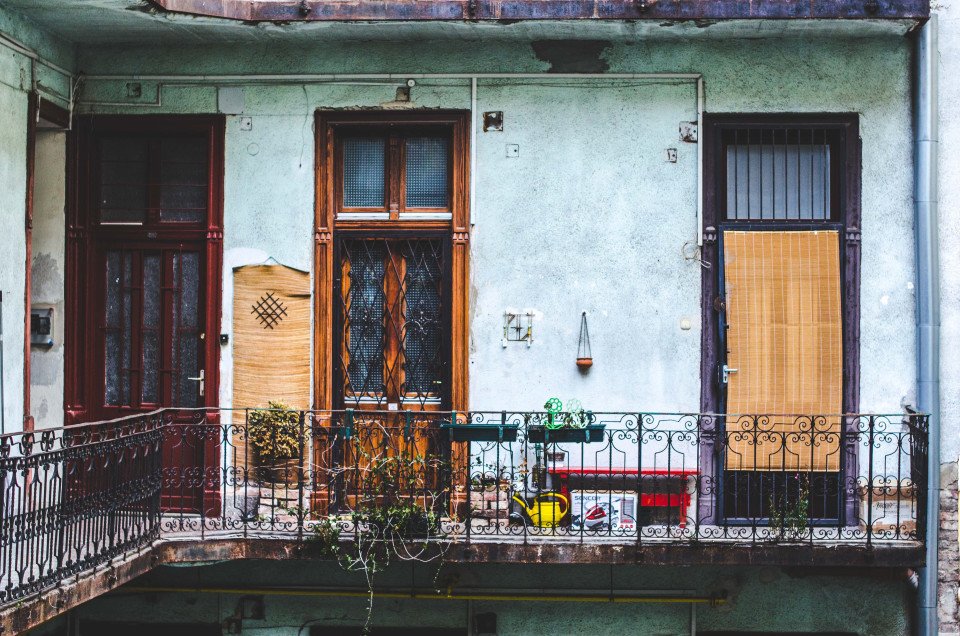
Budapest is the capital city of Hungary and is located over the River Danube. It is one of the largest cities in the European Union and much of its historical sites have been awarded UNESCO World Heritage Site status. Originally formed in 1873 by the joining of Buda, Pest and Old Buda, the city suffered heavy destruction during World War II and was rebuilt into the country's political, cultural and commercial hub it is now. Bridges and railways connect the city over the Danube, including the six small islands situated on the river themselves. Some of Budapest’s UNESCO World Heritage sites include Chain Bridge, Budapest Parliament, the striking Matthias church and the iconic Royal Palace visible from every location within Budapest City. The Castle Hills district architecture represents ov ... Read More
Budapest is the capital city of Hungary and is located over the River Danube. It is one of the largest cities in the European Union and much of its historical sites have been awarded UNESCO World Heritage Site status. Originally formed in 1873 by the joining of Buda, Pest and Old Buda, the city suffered heavy destruction during World War II and was rebuilt into the country's political, cultural and commercial hub it is now. Bridges and railways connect the city over the Danube, including the six small islands situated on the river themselves. Some of Budapest’s UNESCO World Heritage sites include Chain Bridge, Budapest Parliament, the striking Matthias church and the iconic Royal Palace visible from every location within Budapest City. The Castle Hills district architecture represents over a thousand years of the city's history with examples of Roman, Turkish, Gothic, Renaissance and Art Nouveau styles. Budapest also has a rich Jewish heritage and is home to the largest synagogue in Europe. The city has an abundance of restaurants offering international cuisines, as well as traditional Hungarian dishes ,including goulash soup, a very popular lunchtime dish. Hungarians enjoy their coffee so a traditional cafe is never hard to find. ... Show Less
Vienna is the capital and largest city of Austria. Located on the Danube River in the East of the country, the city is renowned for its strong music heritage and rich culture, and is the largest German speaking city in the world, outside of Berlin. In 2001, Vienna was designated a UNESCO World Heritage Site and boasts magnificent architecture. The city is home to over 27 castles and 150 palaces including the symbolic Gothic St Stephen’s Cathedral and the iconic Schönbrunn Palace. Art and music are in abundance and all tastes are catered for. Live music venues offer everything from Rock to Opera. Enjoy world class performances at Vienna State Opera and experience the epicentre of international concert life at Musikverein. Modern and historical art can be found in indoor and outdoor space ... Read More
Vienna is the capital and largest city of Austria. Located on the Danube River in the East of the country, the city is renowned for its strong music heritage and rich culture, and is the largest German speaking city in the world, outside of Berlin. In 2001, Vienna was designated a UNESCO World Heritage Site and boasts magnificent architecture. The city is home to over 27 castles and 150 palaces including the symbolic Gothic St Stephen’s Cathedral and the iconic Schönbrunn Palace. Art and music are in abundance and all tastes are catered for. Live music venues offer everything from Rock to Opera. Enjoy world class performances at Vienna State Opera and experience the epicentre of international concert life at Musikverein. Modern and historical art can be found in indoor and outdoor spaces around the city, and a visit to the famous Kunsthistorisches Museum (KHM) is highly recommended. Enjoy views of the city from the Danube Tower and the Giant Ferris Wheel, then relax in the ample cosy coffee houses, cafes, bars and restaurants where traditional and international cuisines are served, as well as the locally produced wines. ... Show Less

Donji Milanovac offers a breathtaking backdrop for explor...
Weissenkirchen, Austria, is situated in the heart of the...
Recognised for the magnificent Engelszell Abbey, Engelhar...
About 8 miles downstream—which means seaward, to the east—fr...
Experience Belgium's capital, a city renowned for its cul...
Rudesheim am Rhine is a town in the Rhine Valley in Germany...
Brugge (Bruges) is a city pulled straight from a fairy-ta...
Neuhofen an der Ybbs is a must-visit for adventurers and...
Donji Milanovac offers a breathtaking backdrop for explor...
Weissenkirchen, Austria, is situated in the heart of the...
Recognised for the magnificent Engelszell Abbey, Engelhar...
About 8 miles downstream—which means seaward, to the east—fr...
Experience Belgium's capital, a city renowned for its cul...
Rudesheim am Rhine is a town in the Rhine Valley in Germany...
Brugge (Bruges) is a city pulled straight from a fairy-ta...
Neuhofen an der Ybbs is a must-visit for adventurers and...
Donji Milanovac offers a breathtaking backdrop for explor...
Weissenkirchen, Austria, is situated in the heart of the...
Recognised for the magnificent Engelszell Abbey, Engelhar...
About 8 miles downstream—which means seaward, to the east—fr...
Experience Belgium's capital, a city renowned for its cul...
Rudesheim am Rhine is a town in the Rhine Valley in Germany...
Brugge (Bruges) is a city pulled straight from a fairy-ta...
Neuhofen an der Ybbs is a must-visit for adventurers and...
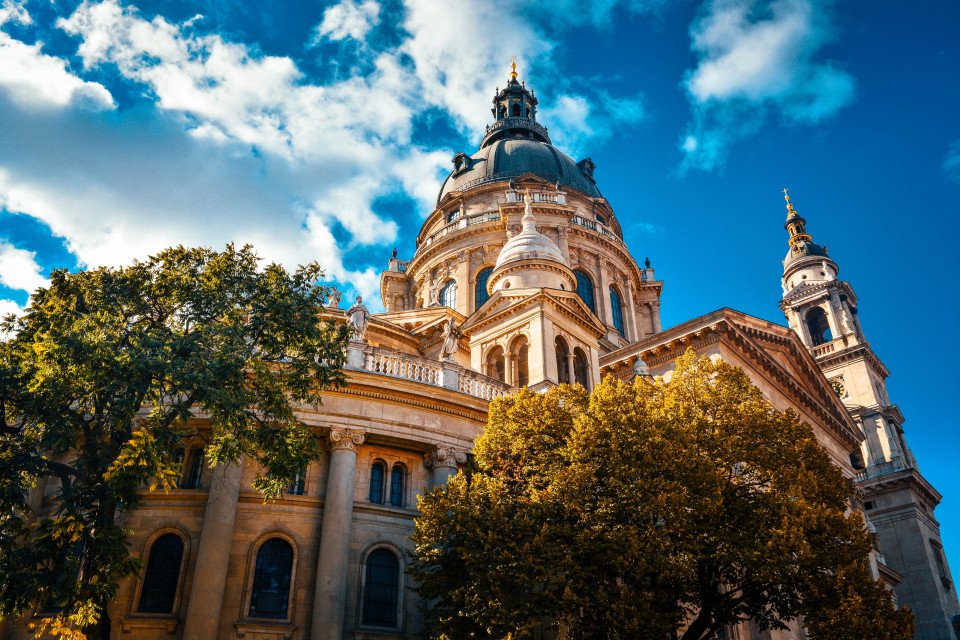
Budapest is the capital city of Hungary and is located over the River Danube. It is one of the largest cities in the European Union and much of its historical sites have been awarded UNESCO World Heritage Site status. Originally formed in 1873 by the joining of Buda, Pest and Old Buda, the city suffered heavy destruction during World War II and was rebuilt into the country's political, cultural and commercial hub it is now. Bridges and railways connect the city over the Danube, including the six small islands situated on the river themselves. Some of Budapest’s UNESCO World Heritage sites include Chain Bridge, Budapest Parliament, the striking Matthias church and the iconic Royal Palace visible from every location within Budapest City. The Castle Hills district architecture represents over a thousand years of the city's history with examples of Roman, Turkish, Gothic, Renaissance and Art Nouveau styles. Budapest also has a rich Jewish heritage and is home to the largest synagogue in Europe. The city has an abundance of restaurants offering international cuisines, as well as traditional Hungarian dishes ,including goulash soup, a very popular lunchtime dish. Hungarians enjoy their coffee so a traditional cafe is never hard to find.

Vienna is the capital and largest city of Austria. Located on the Danube River in the East of the country, the city is renowned for its strong music heritage and rich culture, and is the largest German speaking city in the world, outside of Berlin. In 2001, Vienna was designated a UNESCO World Heritage Site and boasts magnificent architecture. The city is home to over 27 castles and 150 palaces including the symbolic Gothic St Stephen’s Cathedral and the iconic Schönbrunn Palace. Art and music are in abundance and all tastes are catered for. Live music venues offer everything from Rock to Opera. Enjoy world class performances at Vienna State Opera and experience the epicentre of international concert life at Musikverein. Modern and historical art can be found in indoor and outdoor spaces around the city, and a visit to the famous Kunsthistorisches Museum (KHM) is highly recommended. Enjoy views of the city from the Danube Tower and the Giant Ferris Wheel, then relax in the ample cosy coffee houses, cafes, bars and restaurants where traditional and international cuisines are served, as well as the locally produced wines.

Dürnstein is a town located in the Northeast of Austria, situated on the Danube river. It is part of the UNESCO World Heritage site and wine region of Wachauer. It is a popular destination for wine lovers as many wineries offer accommodation. In addition to wine tasting and vineyard tours, visitors will find exploring the area on foot is easy and enjoyable. Take one of the many beautiful hiking trails across ancient rocks and admire the impressive views across the Danube valley. Children will enjoy exploring the outdoors of Dürnstein too, with outdoor playgrounds and theme trails available to keep them entertained. In addition, children and adults will enjoy Austria’s only outdoor biological swimming pool, Kuenringerbad, with an average temperature of 23 degrees celsius. Enjoy views of the town from overhead helicopter tours, leisurely river excursions, or hike up into the mountains and explore some of Dürnstein’s ruins. The mountains offer the ruins of Dürnstein castle and city wall as well as beautiful flora and fauna to spot.
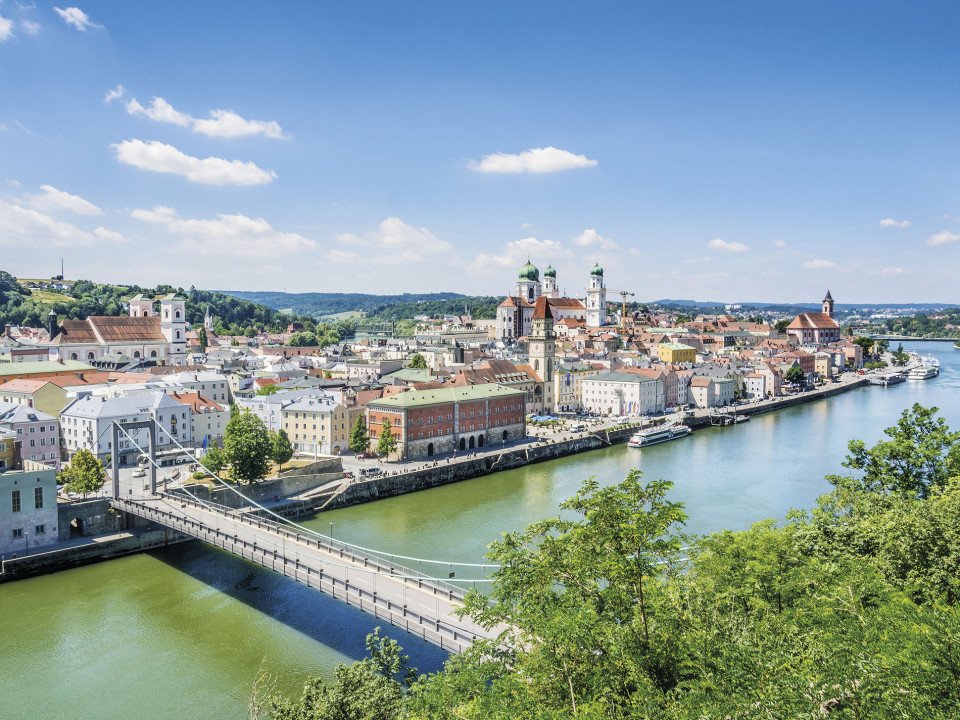
Passau is a German city located in the Southeast of Germany on the Austrian border. It is situated at the confluence of the rivers Danube, Inn and Ilz. The Three Rivers City, as it’s also known, is unique for its three contrasting currents of blue, green and black. Old Town of Passau is home to towering buildings of striking architecture: the majestic fortress Veste Oberhaus, the Pilgrimage Church Mariahilf and St Stephen's Cathedral. Many of Passau’s attractions can be found in this area, including the New Bishop’s Residence, the Gothic Town Hall, as well as many churches and museums. Visitors can stroll along the riverfront promenades and romantic lanes whilst enjoying the picturesque landscape. For modern art, The Museum of Modern Art and Glass Museum Passau are recommended as they offer something a bit different. Theatre and cabaret are a popular evening pastime, with performances at the former Prince Bishopric Theatre or some lively cabaret and Jazz at the Scharfrichterhaus. Visitors will also find many traditional local Bavarian and Austrian cafes and restaurants offering a cosy atmosphere with home cooked food from local produce.
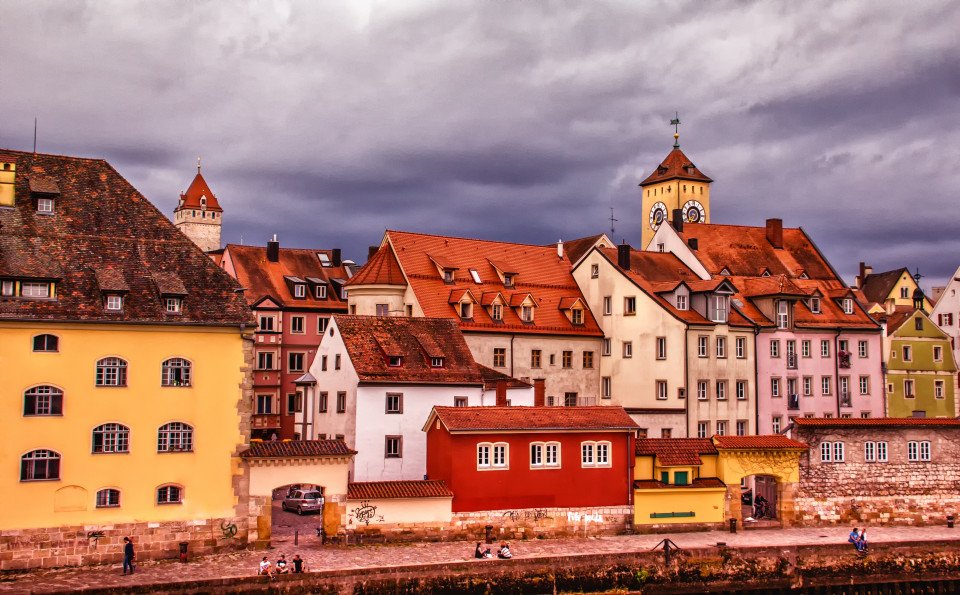
Regensburg is a medieval city of Bavaria in southeast Germany. It is situated on the northern point of the Danube River at its confluence with the Regen and Naab rivers. The city is famous for its iconic 12th Century stone bridge and sixteen arches, crossing the Danube into Old Town and is the oldest preserved bridge in Germany. Regensburg is also noted for its 13th Century Regensburg Cathedral and Gothic twin spires that feature prominently on the city’s skyline. Recently awarded UNESCO World Heritage status, the city is home to many preserved sites. Visit the the 2nd Century Porta Praetoria which served as the north gate to a Roman camp and St Peter’s Cathedral, with its French Gothic architecture. Also the 18th Century Thurn and Taxis Palace and the Old Town Hall, which is now home to the Imperial Diet Museum, are also worth a visit. Regensburg benefits from lots of parks and gardens for visitors to relax in, as well as walks and cycle paths along the banks of the rivers.
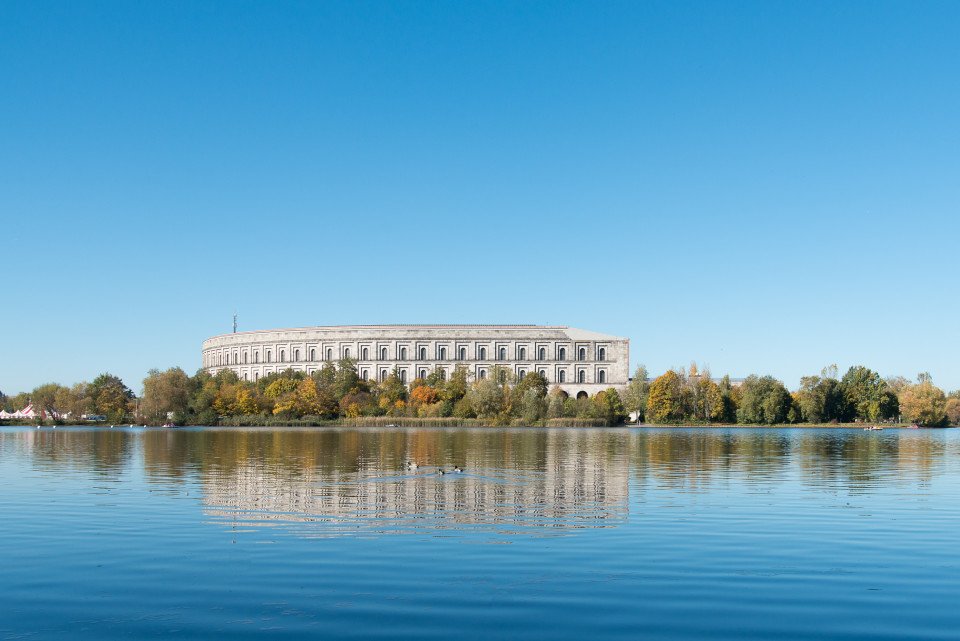
Nuremberg is a medieval city located in northern Bavaria in Germany. It is Bavaria's second largest city and is noted for its iconic red roofed buildings and medieval architecture. The imperial Castle overlooks Nuremberg and was one of the most important fortifications of the Roman Empire. For more significant cultural history, the Germanisches Nationalmuseum, one of the largest cultural history museums in the German speaking world, offers visitors exhibitions from Prehistoric all the way to present day. Walking tours around the city offer an enjoyable and active way to learn of Nuremberg’s history and culture. Through Old Town, discover fountains, wells, churches, and art treasures, as well as learning of the colourful past and cosmopolitan present of the city and its people. Nuremberg is also home to one of the oldest Christmas markets in Germany, the Nuremberg Christkindlesmarkt, where visitors can purchase traditional handmade decorations and enjoy the famous gingerbread, mulled wine, and grilled sausage from over one hundred and eighty wooden stalls.

Bratislava is the capital city of Slovakia and is located along the Danube a river on the borders of Austria and Hungary. The city is surrounded by the Little Carpathians Mountains and vineyards as well as its iconic reconstructed Bratislava Castle overlooking Old Town. The castle offers a picturesque view of the city, the neighbouring countries and is home to the Museum of History. Bratislava offers a blend of historic and modern attractions including the Old Town Hall, now home to the Bratislava City Museum, the UFO Bridge, Martin’s Cathedral, Michael’s Gate and Blue Church St Elizabeth’s. Bratislava is home to one of the oldest city parks in Central Europe and is popular with walkers, runners and cyclists as is the city forest park and foothills of the Carpathian Mountains. The city is popular for its locally brewed beers and has many micro-breweries and underground beer cellars. The local cuisine of Bratislava is an eclectic influence of European cultures including Slovak, Hungarian, Austrian and German and serves as a reminder of the history of this cosmopolitan city. However, visitors will find an array of offerings to suit all tastes with lunch being the main meal of the day and roast goose with lokse considered a signature dish of the area.

Linz is a city in northern Austria located on both banks of the Danube River and is a short distance from Salzburg and Vienna. Linz has been awarded UNESCO City of Media Arts status and prides itself on offering a broad spectrum of events, activities and cultural institutions. Enjoy popular open air concert such as Klassik am Dom and extravagant street performances, which attract large crowds and popular international artists. Art galleries and centres are in abundance around the city as well as many museums housing international collections and depictions of the history and heritage of Linz. The architecture of the city also plays an important role in Linz’s cultural heritage with Main Square, Old Town and Mariendom Cathedral being some key attractions. Families will enjoy a trip to Postlingberg, located high up in the mountains and featuring a zoo, the Grottenbahn and spectacular views of the river and city below.

Krems an der Donau is a city in Northeast Austria located approximately forty three miles from Vienna. The city is situated on the banks of the river Danube and is one of the oldest of the Wachau Valley. Krems prides itself on historical preservation and has recently been awarded UNESCO World Heritage Site status. The history of the city dates back more than a thousand years with evidence found in its streets, squares, monasteries, churches and fortifications. Krems is also a modern city which celebrates its contemporary art and modern literature as well as being a leader in biotech application research. Exploring Krems is easily done on foot with city walking tours being very popular. Discover Old Krems and the Art Mile and learn about the city’s rich history at Museum Krems. As with many wine cities, food and drink is in abundance with popular restaurants and wine bars housed in historical buildings which enhance and deepen the dining and wine tasting experience.

Mohács is situated on the banks of the Danube river in southern Hungary, celebrated for its significance in history and warfare strategy as the site of the 16th Century Battle of Mohács, which saw the Ottoman Empire defeat the Kingdom of Hungary in what became a pivotal event in history. The town offers a number of historical landmarks to reflect its diverse past, including the Mohács Castle and the Turkish House. Moreover, Mohács is host to the renowned Busójárás festival, a unique carnival featuring elaborate masks and traditional rituals.

Known for its vibrant red paprika fields, Kalocsa is a delighing town situated along the banks of the Danube adorned with intricate architecture and famed for its culinary prowess. With a rich tapestry of cultural heritage and history, Kalocsa embodies traditional folklore and tradition, attracting a global audience of visitors to engage in its lively festivities.

Novi Sad, situated in the north of Serbia, is recognised for its stunning landscapes, cultural richness and historical architecture. The famous Petrovaradin Fortress dominates the city scape, and plays host annually to the EXIT music festival, drawing crowds from across the globe. With its enticing old town, colourful culinary scene and welcoming feel, sitting along the banks of the Danube, Novi Sad offers a delightful blend of history, entertainment and Serbian hospitality.

Donji Milanovac offers a breathtaking backdrop for exploration and relaxation, situated at the confluence of the Danube and the Iron Gate Gorge. Steeped in natural beauty, the town boasts stunning vistas of rugged cliffs and serene waters, adorned with archaeological sites including the Lepenski Vir, an ancient settlement dating back thousands of years.

As the River Danube flows through the Carpathian Mountains, the breath-taking gorge known as the Iron Gates is formed, creating a natural border between Serbia and Romania. Characterised by steep limestone cliffs towering dramatically over the water, painting a magnificent landscape, this awe-inspiring stretch of the Danube is not only rich in natural beauty but also holds significance culturally and historically, home to archaeological remnants that date back to ancient times. The Iron Gates Dam is also situated within the Iron Gates, one of Europe's largest hydro-electric power stations, only further enhancing the gravity of the geographical marvel.

Belgrade, Serbia's capital, is characterised by its rich cultural tapestry, resilient spirit and lively nightlife. Situated at the confluence of the Sava and Danube, Belgrade beautifully blends history with modernity, offering visitors the opportunity to explore the magnificent Belgrade Fortress, wander through the bohemian Skadarlija district, and enjoy the city's vibrant culinary scene. Adorned with an amalgamation of architectural styles, reflecting the deep and complex history of the city, Belgrade embodies the resilience and vitality of Serbia.

Vukovar is a Croatian city with a poignant history, marked by the Croatian War of Independence of the early 20th Century, during which it suffered extensive damage and destruction. Despite the scars of its past, Vukovar has seen remarkable efforts to rebuild, whilst maintaining elements of its rich cultural history. Visitors today can explore the Baroque architecture of Eltz Castle and the solemn Memorial Cemetery, serving as a symbol of resilience and strength alongside hope, recovery and light, a tribute to the powerful determination of its population.
-custom_banner-banner_half.jpg)
Steeped in medieval history, Vidin is a striking city located in the North-West of Bulgaria on the banks of the Danube, home to the incredible Baba Vida fortress, one of the country's oldest and best-preserved strongholds. Offering a glimpse into Bulgaria's cultural past, Vidin's cobblestone streets and Ottoman-era architecture paint a vivid picture of the country's legacy, surrounded by scenic views and the relaxed atmosphere of the Danube waterfront.

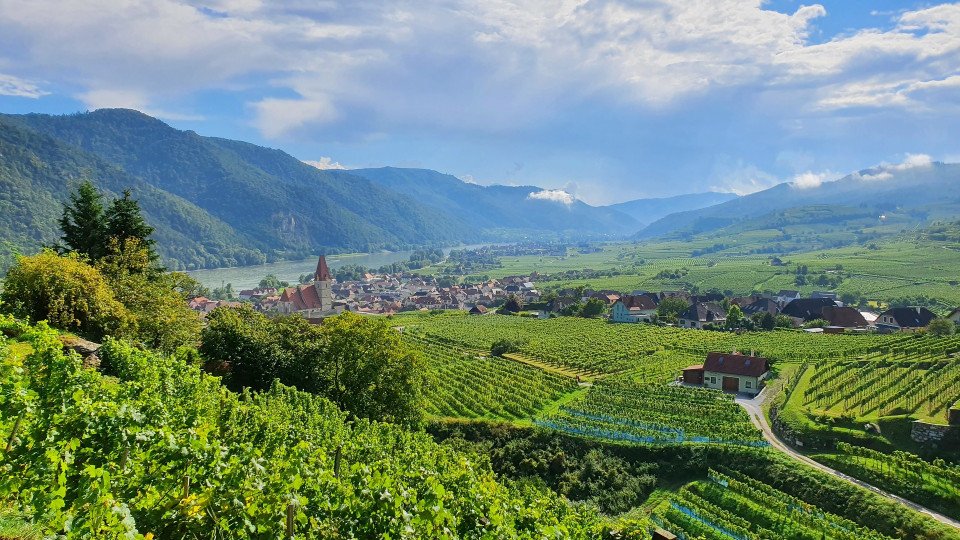
Weissenkirchen, Austria, is situated in the heart of the Wachau Valley, a UNESCO World Heritage Site renowned for its breath-taking hillsides adorned with vineyards. Visitors find themselves enamoured by the village's stunning architecture, in particular the iconic church tower, and are invited to indulge in the local wines for a truly immersive experience.

Grein, home of the historic 15th century Greinburg castle, is a delightful town situated on the banks of the Danube River. Overlooked by the historic landmark, the town is set against picturesque mountains and landscapes and offers visitors a glimpse into Austria's abundant culture.
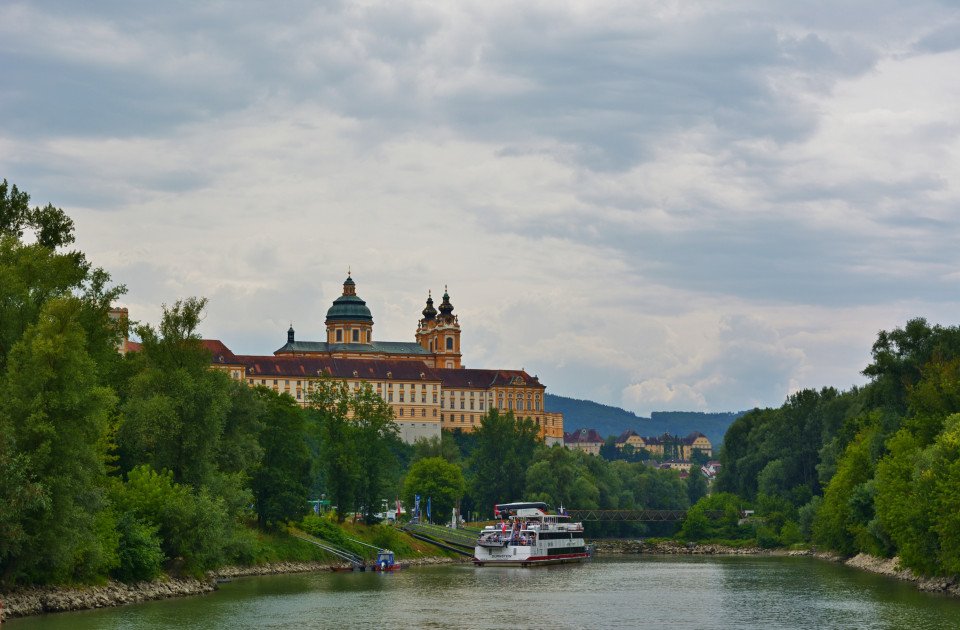
Melk is an Austrian town situated on the River Danube. Located west of Vienna, the town is mostly famous for its 11th Century Melk Abbey, a magnificent monastery built high above the town. Melk Abbey is the largest example of Baroque architecture in the Wachau Valley, with the valley itself awarded UNESCO World Heritage Site status in 2000. Its steep terraced vineyards mean vinters cultivate with traditional manual practices and the springtime sees this unique landscape covered in apricot tree blossoms. Strolling around the streets of Melk Old Town, visitors will find the Town Hall Square, the Main Square, the old Post Office, now a local museum, Old Abbey Tavern, and Kremser Strasse. River cruises, self-guided walking tours and cycle tours are also extremely popular around Melk, as the Wachau Valley offers unique landscape to be explored and enjoyed. Art festivals and Baroque music is celebrated each year with the Melk Baroque Days, an international festival.



Ruse, or "Little Vienna" as it is affectionately referred, is an enchanting city resting on the northern bank of the Danube in Bulgaria. Seamlessly blending an amalgamation of European influences, with elegant 19th-century buildings and grand avenues, Ruse is home to iconic architectural landmarks such as the Freedom Square and the Monument of Liberty. Beyond its rich history and architectural heritage, the city's strategic location as a major port along the Danube has pivotally influenced its progression as a cultural and economic hub.

Situated along the banks of the Danube River, Vilshofen is a charming riverside town best-known for its breath-taking landscapes and traditional architecture. The city seamlessly integrates authentic Bavarian charm with modern amenities, presenting a valuable opportunity to explore the quaint city streets, visit local landmarks and experience the region's rich cultural heritage.

Visegrád, Hungary, is home to the magnificent Visegrád Castle, a medieval fortress that sits atop the hills and overlooks the Danube Valley. The old town boasts streets paved with cobblestone, centuries-old architecture and quaint cafes evoking a sense of warmth and nostalgia. With a vibrant atmosphere, scenic vistas and cultural landmarks, Visegrád offers a window into Hungary's fascinating past against a backdrop of stunning landscapes.

Bamberg is a German town located over a landscape of seven hills and the confluence of Regnitz and Main rivers. The town is a UNESCO World Heritage Centre with Old Town home to structures dating back to the 11th century. An iconic landmark to visit in Bamberg is the town hall Altes Rathaus, located on an island in the Regnitz and covered in murals. Bamberg Cathedral, with its four towers and numerous stone carvings, is a striking example of Romanesque architecture. Head to the Market Gardeners District and visit the historical houses where centuries ago the town gardeners would grow and export produce such as onions, seeds and liquorice. In the town centre and heart of Little Venice, the rivers and arched bridges connecting the island city are reminiscent of Venice, with a lively atmosphere and modern shops set in historical surroundings. After a day shopping, head to one of the many Brewery pubs for some popular German beer. Bamberg is famous for its beer and is where its name originated from, with the town being populated by nine traditional breweries.

Würzburg is a city in Bavaria in southern Germany. It is located on the River Main and is famous for its lavish baroque architecture and Franconian wine. The Residence Palace is a UNESCO World Heritage Site and is highly recommended. It is a well known example of Baroque architecture with its acclaimed staircase, impressive frescos and imperial hall. Other impressive sites in Würzburg include the towering fortress of Festung Marienberg, the Alt Mainbrücke old bridge, which offers ideal views of the Marienberg, Dom St. Kilian cathedral and the many churches of Würzburg including the Romanesque Neumünster. Many of these sites have their own museums for visitors to learn of the history or view unique collections. Other museums of interest are the Mineralogical Museum, exhibiting the world of minerals and stones, and the Botanical Gardens, with various greenhouses and outdoor areas to enjoy. Wine lovers will find an abundance of wineries in Würzburg, offering cellar tours and wine tasting as well as traditional Bavarian cuisines and hospitality. Enjoy wine soup, Gerupfter (cheese spread) and Sauerbraten (braised beef in wine) in a friendly traditional wine tavern.

Recognised for the magnificent Engelszell Abbey, Engelhartszell an der Donau is a serene village celebrated for incredible natural beauty and rich history. Characterised by its brewing traditions, idyllic landscapes and lush surrounding forests, Engelhartszell an der Donau is a perfect opportunity for visitors to immerse themselves in Austria's countryside beauty.
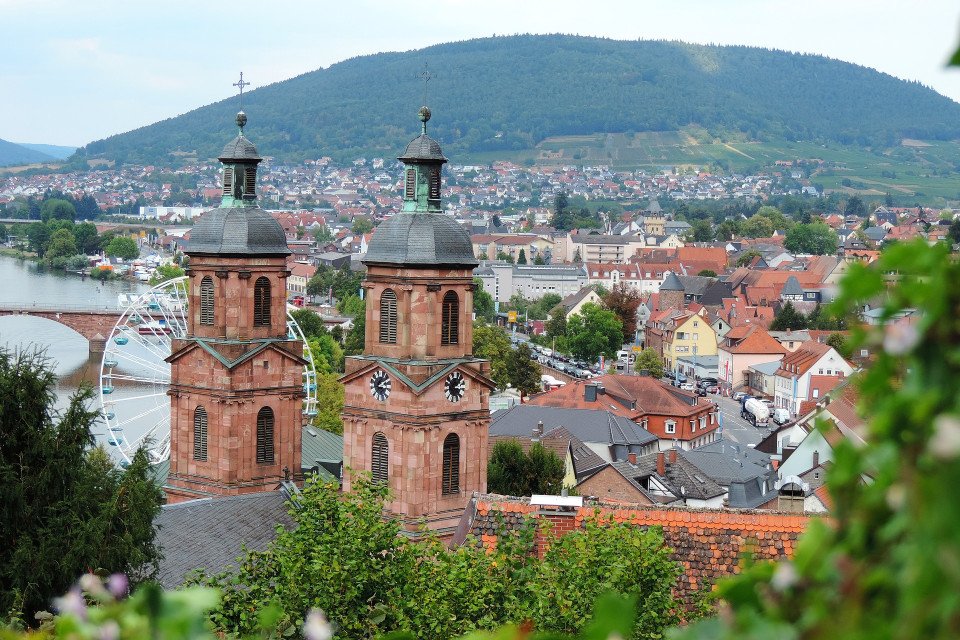
Miltenberg is a city located in Bavaria and Southern part of Germany. Located on the banks of the river Maine the city grew from its medieval roots through Viniculture, wine trade, fishery, and general river traffic, into the established and preserved town of today. Visit the Museum Stadt Miltenberg, housed in the half timbered house called the Alte Amtskellerei (The Provost’s Office) and discover the town’s history through collections depicting culture back to the Romans. A visit to castle Miltenberg is also recommended. The castle dates back to the 11th century and is now owned by the city administration. With the castle in need of rehabilitation, the Museum Burg Miltenberg was opened to exhibit classic icons and contemporary art in a historical and significant setting. The keep of the castle, which reaches twenty seven metres high, offers picturesque views of the Main Valley below and is the perfect setting to relax and enjoy some refreshments.
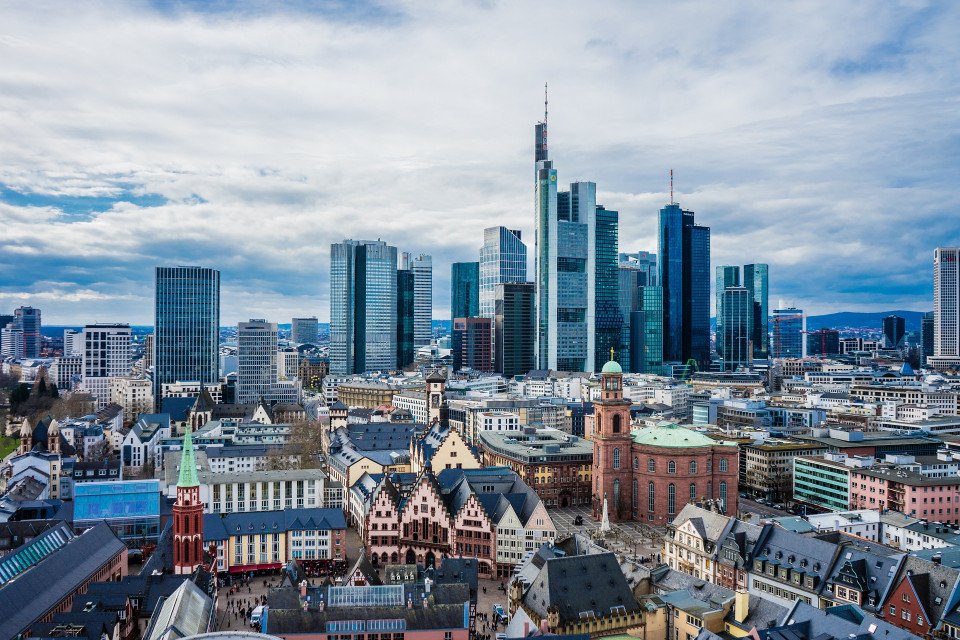
Frankfurt, birthplace of the iconic writer Johann Wolfgang von Goethe, boasts a wealth of cultural attractions, vibrant modernity and rich history. The cityscape is dominated by sleek skyscrapers, a showcase of the city's status as a dynamic metropolis and the financial capital of Europe. Home to world-class museums, diverse cuisine and lively markets, Frankfurt offers a varied array of experiences that complement its cosmopolitan character and enduring legacy.

Speyer is a town located in southwest Germany situated beside the river Rhine. Originally founded by the Romans, it is one of the oldest settlements in Germany and is situated in the popular wine growing region of the Palatinate. A key attraction of Speyer is the Historical Museum of the Palatinate, which is one of the most celebrated culture-history museums in Germany. It features five permanent collections including Prehistory, Roman Times, Cathedral Treasury, Modern Era and Wine Museum. Not far from the museum, visitors will find the Imperial Cathedral, a UNESCO World Heritage Site, which is considered the largest preserved Romanesque church in Europe. Originally constructed by Konrad II, this magnificent and looming building was intended to demonstrate the Lord’s religio-political claim to power against the papacy. Speyer has been producing wine since its Roman beginnings and wine tasting, festivals and events are popular all year round. The town is popular for outdoor activities such as hiking and cycling as well as guided walking tours of the town.

Rüdesheim is a popular stop on the Rhine, renowned for vineyards and medieval architecture. A notable feature of the town's vibrant cultural scene is the Drosselgasse, a narrow street paved with cobblestone and lined with wine taverns and local retailers, showcasing a delightful combination of local wine and traditional German hospitality. Encompassed by rolling vineyards and adorned with historic landmarks, Rüdesheim provides a quintessential German experience in a setting that seamlessly marries natural beauty with cultural richness.
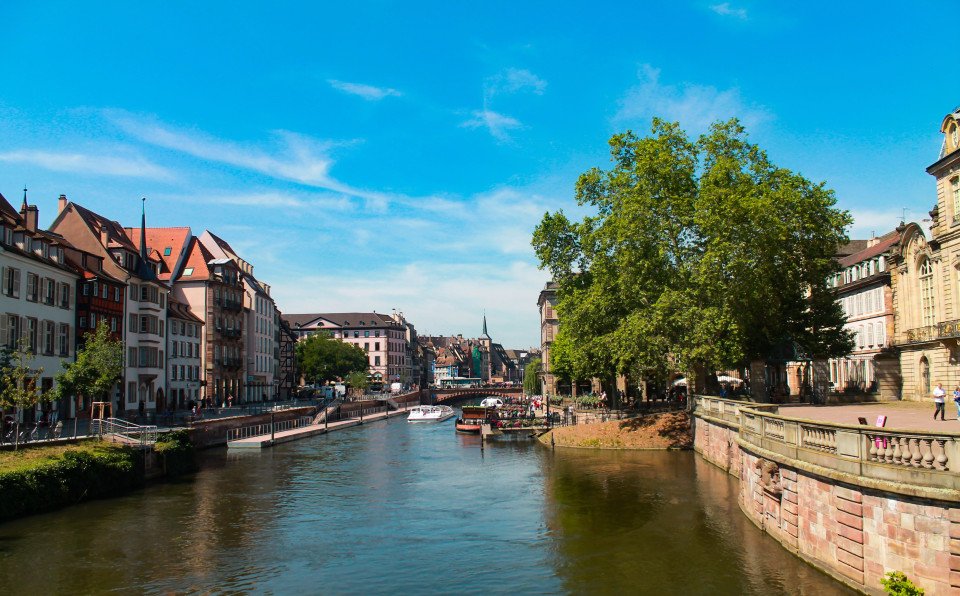
Strasbourg is a picturesque city in northeastern France, notable for its unique blend of French and German influences. Thanks to well-preserved, awe-inspiring medieval architecture such as the stunning Strasbourg Cathedral and the historic La Petite France district, Strasbourg has earned its spot on the map as a famous, must-visit European destination.

Breisach is a town located in Southwest Germany on the French border. The town is situated in the Rhine Valley on the banks of the river Rhine and dates back over four thousand years. Breisach and its history can be experienced through the City History Museum, which houses a permanent exhibition taking you from Stone Age through the Celtic, to the Romans and Middle Ages, right up to modern day. St Stephen's Cathedral is home to the city’s famous art treasures, the wheel wells, which are housed in the neighbouring Radbrunnenturm with the forty one metre deep water well. The cathedral is also home to many other treasures including the High Altar of Master HL and wall paintings by Martin Schongauer as well as High Gothic and Roman architecture. A visit to the Blue House, the former Jewish Community Centre, is highly recommended. Now owned by the Friends of Former Jewish Community House Breisach it exhibits memorials to Breisach’s Jewish heritage.
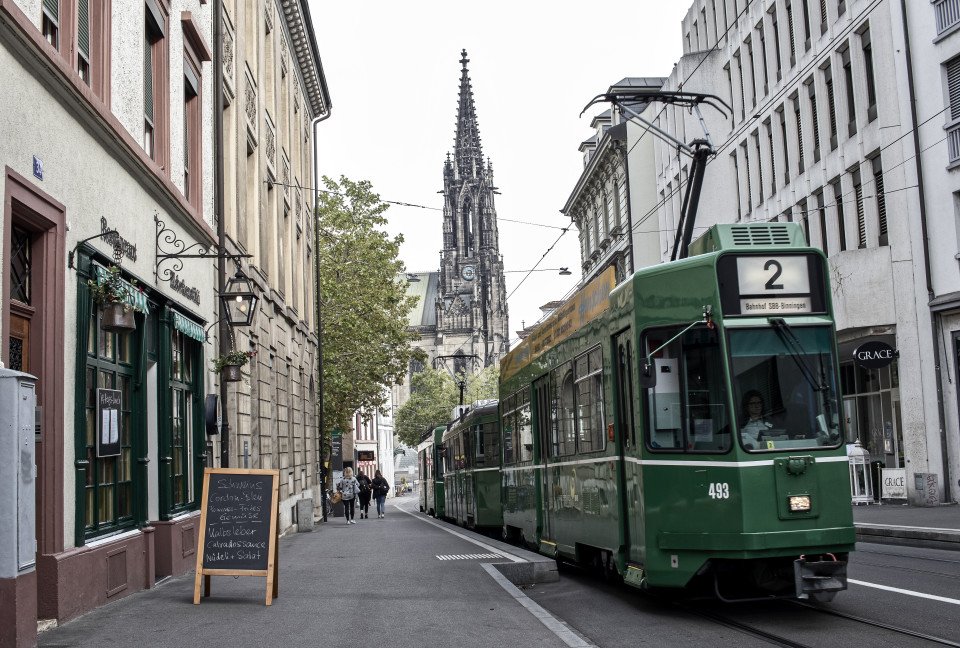
Basel is a city in northwestern Switzerland on the Swiss, French and German borders. It is located on the bend of the River Rhine and benefits from a Mediterranean climate. It is the third most populated city in Switzerland and has been the commercial hub for Swiss arts and culture since the Renaissance. In 1967 the people of Basel voted to acquire two paintings by Picasso, who was so moved by the Basel people that he donated 3 paintings and a study to the city's Kunstmuseum (Museum of Fine Arts). Visit the Augusta Raurica, one of the largest Roman archaeology parks in Switzerland, and enjoy a river crossings over the River Rhine by non-motorised ferries. During the summer months, time is spent outdoors, either swimming in the River Rhine, dining al fresco, enjoying open air concerts, cinema, street parties and festivals. Basel is home to over 20 restaurants that have won GaultMillau or Michelin awards, and boasts Switzerland's largest collection of theatre shows, including modern contemporary dance, touring and puppetry theatre.

Sitting on the banks of the Danube, Golubac is a small town best recognised for its medieval fortress standing prominently atop a hill overlooking the river. With a storied history dating back to the 14th century, The Golubac Fortress is a significant cultural landmark that has been instrumental to the region's defence.

Oltenita is an embodiment of culture and history, situated along the banks of the Danube in Romania. Located the Călărași County, Oltentia is characterised by charm, serenity and tradition, boasting a vibrant community where age-old customs are observed with fervour by the locals. Visitors are immersed in the warmth and hospitality that exudes from the town, exploring enchanting streets rich with timeless allure.

Located in eastern Croatia on the banks of the Danube, Ilok is a charming town recognised for the medieval Ilok Castle, which boasts stunning panoramic views of the surrounding landscapes adorned with vineyards. With a rich history in wine production, the town is celebrated for its centuries-old traditions and is home to a plethora of reputable wineries. Visitors are enchanted by local streets, immersed in local cuisine, and lost in the rich cultural heritage that defines this destination.

In the heart of Bavaria, Roth is home to charming streets, historic architecture and lush countryside, offering a tranquil retreat for visitors looking to explore nature and appreciate the outdoors. Famed for its annual world-renowned Challenge Roth triathlon, the town draws athletes and spectators from all over the world, bolstering community spirit.

The only city in the world that can lay claim to straddling two continents, Istanbul—once known as Constantinople, capital of the Byzantine and then the Ottoman Empire—has for centuries been a bustling metropolis with one foot in Europe and the other in Asia. Istanbul embraces this enviable position with both a certain chaos and inventiveness, ever evolving as one of the world’s most cosmopolitan crossroads. It’s often said that Istanbul is the meeting point of East and West, but visitors to this city built over the former capital of two great empires are likely to be just as impressed by the juxtaposition of old and new. Office towers creep up behind historic palaces, women in chic designer outfits pass others wearing long skirts and head coverings, peddlers’ pushcarts vie with battered old Fiats and shiny BMWs for dominance of the noisy, narrow streets, and the Grand Bazaar competes with modern shopping malls. At dawn, when the muezzin's call to prayer resounds from ancient minarets, there are inevitably a few hearty revelers still making their way home from nightclubs and bars. Most visitors to this sprawling city of more than 14 million will first set foot in the relatively compact Old City, where the legacy of the Byzantine and Ottoman empires can be seen in monumental works of architecture like the brilliant Aya Sofya and the beautifully proportioned mosques built by the great architect Sinan. Though it would be easy to spend days, if not weeks, exploring the wealth of attractions in the historical peninsula, visitors should make sure also to venture elsewhere in order to experience the vibrancy of contemporary Istanbul. With a lively nightlife propelled by its young population and an exciting arts scene that’s increasingly on the international radar—thanks in part to its stint as the European Capital of Culture in 2010—Istanbul is truly a city that never sleeps. It’s also a place where visitors will feel welcome: Istanbul may be on the Bosphorus, but at heart it’s a Mediterranean city, whose friendly inhabitants are effusively social and eager to share what they love most about it.

Amsterdam combines the unrivaled beauty of the 17th-century Golden Age city center with plenty of museums and art of the highest order, not to mention a remarkably laid-back atmosphere. It all comes together to make this one of the world's most appealing and offbeat metropolises in the world. Built on a latticework of concentric canals like an aquatic rainbow, Amsterdam is known as the City of Canals—but it's no Venice, content to live on moonlight serenades and former glory. Quite the contrary: on nearly every street here you'll find old and new side by side—quiet corners where time seems to be holding its breath next to streets like neon-lit Kalverstraat, and Red Light ladies strutting by the city's oldest church. Indeed, Amsterdam has as many lovely facets as a 40-carat diamond polished by one of the city's gem cutters. It's certainly a metropolis, but a rather small and very accessible one. Locals tend to refer to it as a big village, albeit one that happens to pack the cultural wallop of a major world destination. There are scores of concerts every day, numerous museums, summertime festivals, and, of course, a legendary year-round party scene. It's pretty much impossible to resist Amsterdam's charms. With 7,000 registered monuments, most of which began as the residences and warehouses of humble merchants, set on 160 man-made canals, and traversed by 1,500 or so bridges, Amsterdam has the largest historical inner city in Europe. Its famous circle of waterways, the grachtengordel, was a 17th-century urban expansion plan for the rich and is a lasting testament to the city’s Golden Age. This town is endearing because of its kinder, gentler nature—but a reputation for championing sex, drugs, and rock ’n’ roll does not alone account for Amsterdam's being one of the most popular destinations in Europe: consider that within a single square mile the city harbors some of the greatest achievements in Western art, from Rembrandt to Van Gogh. Not to mention that this is one of Europe's great walking cities, with so many of its treasures in the untouted details: tiny alleyways barely visible on the map, hidden garden courtyards, shop windows, floating houseboats, hidden hofjes(courtyards with almshouses), sudden vistas of church spires, and gabled roofs that look like so many unframed paintings. And don’t forget that the joy lies in details: elaborate gables and witty gable stones denoting the trade of a previous owner. Keep in mind that those XXX symbols you see all over town are not a mark of the city's triple-X reputation. They're part of Amsterdam's official coat of arms—three St. Andrew's crosses, believed to represent the three dangers that have traditionally plagued the city: flood, fire, and pestilence. The coat's motto ("Valiant, determined, compassionate") was introduced in 1947 by Queen Wilhelmina in remembrance of the 1941 February Strike in Amsterdam—the first time in Europe that non-Jewish people protested against the persecution of Jews by the Nazi regime.


Cologne is a city in western Germany located across the Rhine river. It is the oldest in Germany, dating back 2000 years and is considered the region’s cultural hub. The city is known for its iconic landmark of the twin-spired Cologne Cathedral set against the reconstructed Old Town buildings. When in Old Town, visit the historic Old Town Hall and the Roman Church Great St Martin, or take time out and sit at one of the traditional breweries and enjoy the scenery around you. Historical sites such as the Roman Dionysus mosaic and the medieval Overstolzenhaus are worth a visit too. Another iconic sight in Cologne is at Hohenzollern Bridge. Here, local and tourist couples affix padlocks to the railings of the bridge and swear their loyalty to each other, they then throw the key into the Rhein to ensure everlasting love. Cologne is home to over 30 stages providing cabaret, free ensembles, theatre and dance and also celebrates its openly gay culture.

Kalè polis, meaning beautiful city, is the name ancient Greek mariners bestowed on Gallipoli, with good reason. Situated on a mound, the Old Town with its labyrinth of winding lanes, emerges from the Ionian Sea. It is connected to the mainland and modern Gallipoli via a 17th-century bridge. The area lies on the Salentina Peninsula in the extreme southeast end of Italy, commonly referred to as the heel of the boot. The Salento region was inhabited already in prehistoric times; later centuries were marked by Greek, Norman, Byzantine and Baroque cultures. It is a land of farms, castles, works of art, myths and legends. Many heroic battles were fought; fierce resistance was shown by Gallipoli’s citizens against numerous invaders that included Romans, Vandals, Swabians, Venetians, French and lastly the English in 1809. In addition to its tumultuous history and natural beauty, the city’s claim to fame rests in its art treasures, most notably, the Basilica of Sant’Agata with its majestic 17th-century façade. Inside, the church contains a rich and important art collection with numerous works by its great native son, Giovanni Andrea Coppola.

Located at the confluence of the Tauber and Main rivers, Wertheim is a German town best known for picturesque medieval architecture, including the impressive Wertheim Castle overlooking the quaint Old Town. The cobblestone streets are testament to the town's rich history, and the timber-framed houses paint a vivid picture of Germany's past.


Bucharest, in southern Romania, is the country's capital and commercial center. Its iconic landmark is the massive, communist-era Palatul Parlamentului government building, which has 1,100 rooms. Nearby, the historic Lipscani district is home to an energetic nightlife scene as well as tiny Eastern Orthodox Stavropoleos Church and 15th-century Curtea Veche Palace, where Prince Vlad III (“The Impaler”) once ruled.

Sitting on the banks of the Danube River, Giurgiu is a Romanian city best known for its historical significance, home to landmarks such as the Clock Tower and the Giurgiu Fortress. What's more, Giurgiu acts as a vital transportation hub that connects Romania to Bulgaria via the Danube Bridge, and is also recognised for its agriculture.



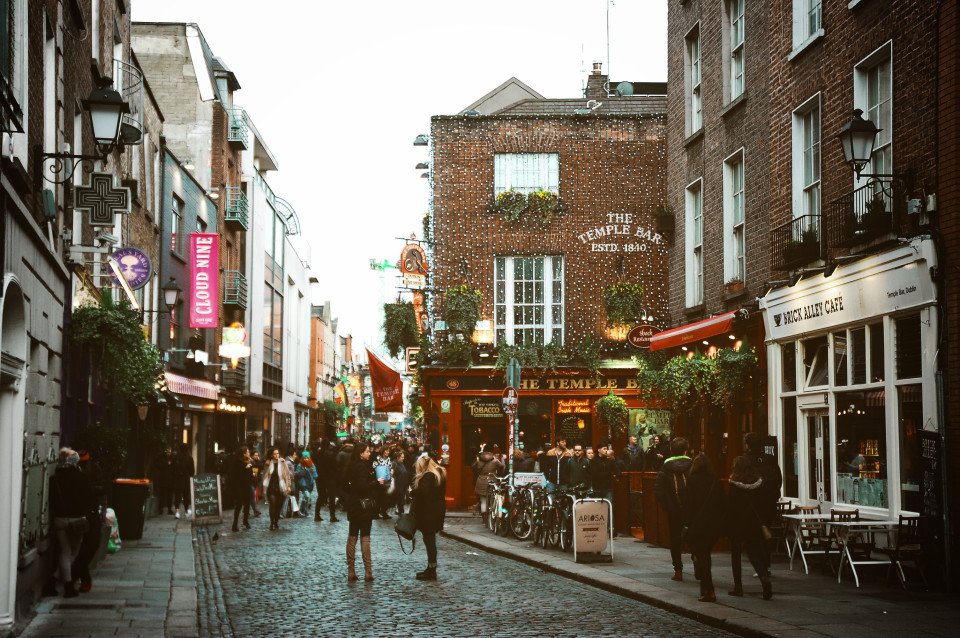
Dublin is making a comeback. The decade-long "Celtic Tiger" boom era was quickly followed by the Great Recession, but The Recovery has finally taken a precarious hold. For visitors, this newer and wiser Dublin has become one of western Europe's most popular and delightful urban destinations. Whether or not you're out to enjoy the old or new Dublin, you'll find it a colossally entertaining city, all the more astonishing considering its intimate size.It is ironic and telling that James Joyce chose Dublin as the setting for his famous Ulysses, Dubliners, and A Portrait of the Artist as a Young Man because it was a "center of paralysis" where nothing much ever changed. Which only proves that even the greats get it wrong sometimes. Indeed, if Joyce were to return to his once-genteel hometown today—disappointed with the city's provincial outlook, he left it in 1902 at the age of 20—and take a quasi-Homeric odyssey through the city (as he so famously does in Ulysses), would he even recognize Dublin as his "Dear Dirty Dumpling, foostherfather of fingalls and dotthergills"?For instance, what would he make of Temple Bar—the city's erstwhile down-at-the-heels neighborhood, now crammed with cafés and trendy hotels and suffused with a nonstop, international-party atmosphere? Or the simple sophistication of the open-air restaurants of the tiny Italian Quarter (named Quartier Bloom after his own creation), complete with sultry tango lessons? Or of the hot–cool Irishness, where every aspect of Celtic culture results in sold-out theaters, from Once, the cult indie movie and Broadway hit, to Riverdance, the old Irish mass-jig recast as a Las Vegas extravaganza? Plus, the resurrected Joyce might be stirred by the songs of Hozier, fired up by the sultry acting of Michael Fassbender, and moved by the award-winning novels of Colum McCann. As for Ireland's capital, it's packed with elegant shops and hotels, theaters, galleries, coffeehouses, and a stunning variety of new, creative little restaurants can be found on almost every street in Dublin, transforming the provincial city that suffocated Joyce into a place almost as cosmopolitan as the Paris to which he fled. And the locals are a hell of a lot more fun! Now that the economy has finally turned a corner, Dublin citizens can cast a cool eye over the last 20 crazy years. Some argue that the boomtown transformation of their heretofore-tranquil city has permanently affected its spirit and character. These skeptics (skepticism long being a favorite pastime in the capital city) await the outcome of "Dublin: The Sequel," and their greatest fear is the possibility that the tattered old lady on the Liffey has become a little less unique, a little more like everywhere else.Oh ye of little faith: the rare ole gem that is Dublin is far from buried. The fundamentals—the Georgian elegance of Merrion Square, the Norman drama of Christ Church Cathedral, the foamy pint at an atmospheric pub—are still on hand to gratify. Most of all, there are the locals themselves: the nod and grin when you catch their eye on the street, the eagerness to hear half your life story before they tell you all of theirs, and their paradoxically dark but warm sense of humor. It's expected that 2016 will be an extra-special year in the capital, as centenary celebrations of the fateful 1916 Easter Rising will dominate much of the cultural calendar.
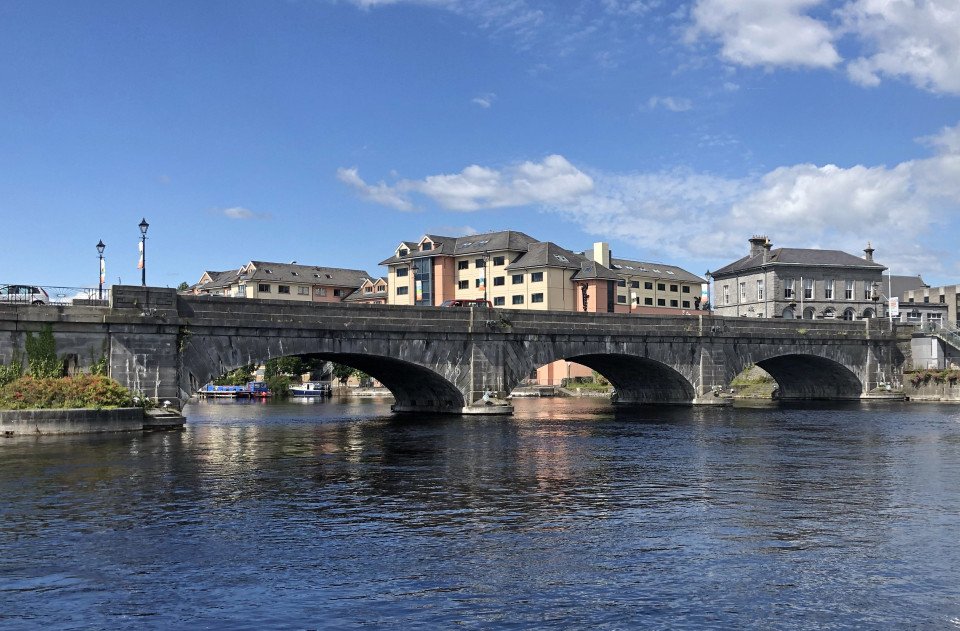
Galway is a city in the West of Ireland in the province of Connacht. It lies on the River Corrib between Lough Corrib and Galway Bay and is surrounded by County Galway. It is the fourth most populous urban area in the Republic of Ireland and the sixth most populous city in the island of Ireland. It is both a picturesque and lively city with a wonderful avant-garde culture and a fascinating mixture of locally owned speciality shops, often featuring locally made crafts. Indeed local handcrafts are a feature of the entire region including hand knits, pottery, glass, jewellery and woodwork. The city’s hub is 18th-century Eyre Square, a popular meeting spot surrounded by shops, and traditional pubs that often offer live Irish folk music. Nearby, stone-clad cafes, boutiques and art galleries line the winding lanes of the Latin Quarter, which retains portions of the medieval city walls. The city bears the nickname "The City of the Tribes" because "fourteen tribes" of merchant families led the city in its Hiberno-Norman period. The merchants would have seen themselves as Irish gentry and loyal to the King. They later adopted the term as a badge of honour and pride in defiance of the town's Cromwellian occupier.

Before English and Scottish settlers arrived in the 1600s, Belfast was a tiny village called Béal Feirste ("sandbank ford") belonging to Ulster's ancient O'Neill clan. With the advent of the Plantation period (when settlers arrived in the 1600s), Sir Arthur Chichester, from Devon in southwestern England, received the city from the English Crown, and his son was made Earl of Donegall. Huguenots fleeing persecution from France settled near here, bringing their valuable linen-work skills. In the 18th century, Belfast underwent a phenomenal expansion—its population doubled every 10 years, despite an ever-present sectarian divide. Although the Anglican gentry despised the Presbyterian artisans—who, in turn, distrusted the native Catholics—Belfast's growth continued at a dizzying speed. The city was a great Victorian success story, an industrial boomtown whose prosperity was built on trade, especially linen and shipbuilding. Famously (or infamously), the Titanic was built here, giving Belfast, for a time, the nickname "Titanic Town." Having laid the foundation stone of the city's university in 1845, Queen Victoria returned to Belfast in 1849 (she is recalled in the names of buildings, streets, bars, monuments, and other places around the city), and in the same year, the university opened under the name Queen's College. Nearly 40 years later, in 1888, Victoria granted Belfast its city charter. Today its population is nearly 300,000, tourist numbers have increased, and this dramatically transformed city is enjoying an unparalleled renaissance.This is all a welcome change from the period when news about Belfast meant reports about "the Troubles." Since the 1994 ceasefire, Northern Ireland's capital city has benefited from major hotel investment, gentrified quaysides (or strands), a sophisticated new performing arts center, and major initiatives to boost tourism. Although the 1996 bombing of offices at Canary Wharf in London disrupted the 1994 peace agreement, the ceasefire was officially reestablished on July 20, 1997, and this embattled city began its quest for a newfound identity.Since 2008, the city has restored all its major public buildings such as museums, churches, theaters, City Hall, Ulster Hall—and even the glorious Crown Bar—spending millions of pounds on its built heritage. A gaol that at the height of the Troubles held some of the most notorious murderers involved in paramilitary violence is now a major visitor attraction.Belfast's city center is made up of three roughly contiguous areas that are easy to navigate on foot. From the south end to the north, it's about an hour's leisurely walk.
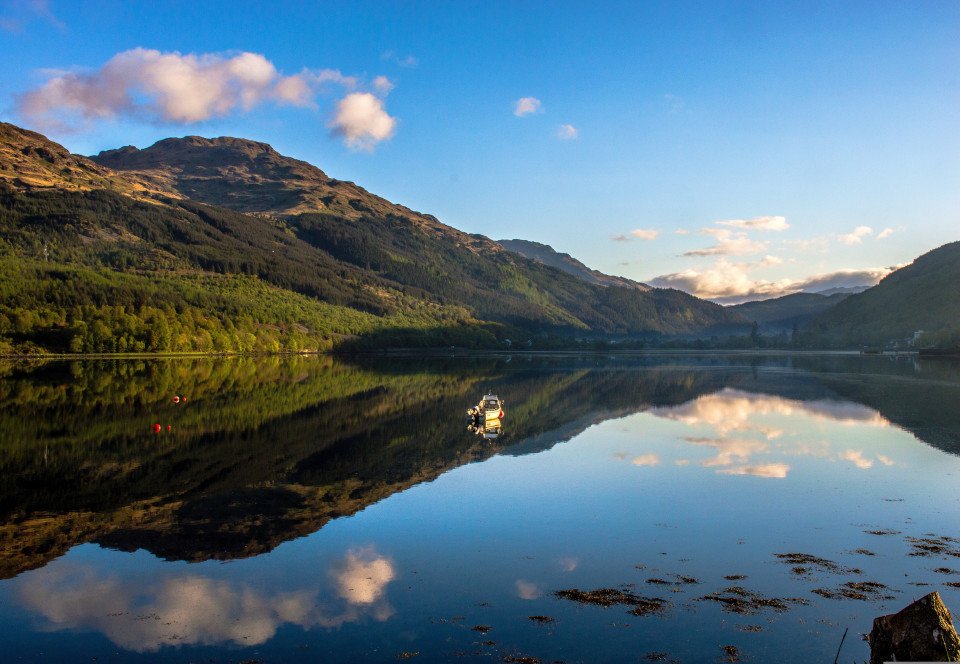

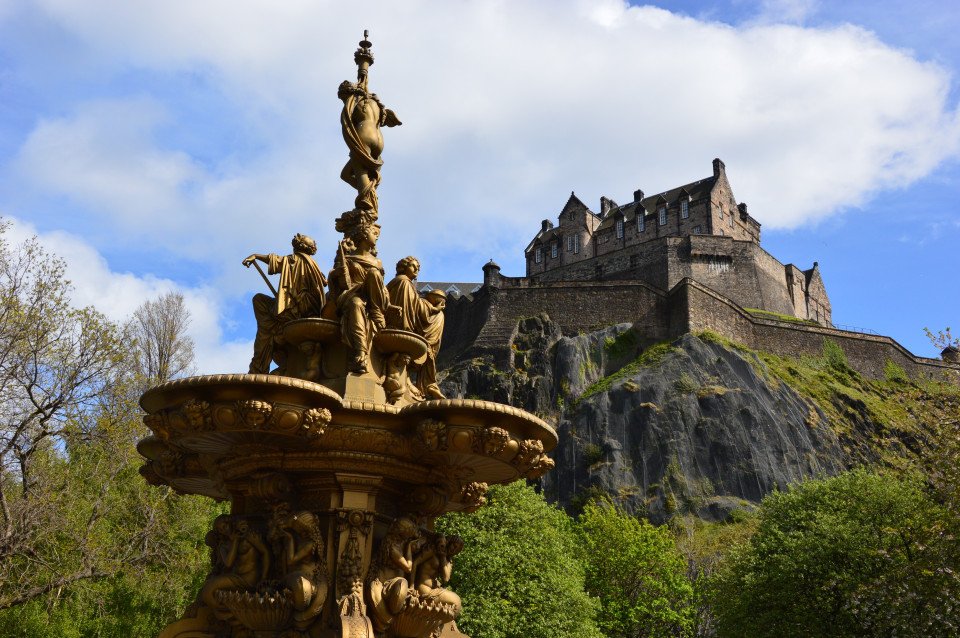
Edinburgh is to London as poetry is to prose, as Charlotte Brontë once wrote. One of the world's stateliest cities and proudest capitals, it's built—like Rome—on seven hills, making it a striking backdrop for the ancient pageant of history. In a skyline of sheer drama, Edinburgh Castle watches over the capital city, frowning down on Princes Street’s glamour and glitz. But despite its rich past, the city’s famous festivals, excellent museums and galleries, as well as the modern Scottish Parliament, are reminders that Edinburgh has its feet firmly in the 21st century.Nearly everywhere in Edinburgh (the burgh is always pronounced burra in Scotland) there are spectacular buildings, whose Doric, Ionic, and Corinthian pillars add touches of neoclassical grandeur to the largely Presbyterian backdrop. Large gardens are a strong feature of central Edinburgh, where the city council is one of the most stridently conservationist in Europe. Arthur's Seat, a mountain of bright green and yellow furze, rears up behind the spires of the Old Town. This child-size mountain jutting 822 feet above its surroundings has steep slopes and little crags, like a miniature Highlands set down in the middle of the busy city. Appropriately, these theatrical elements match Edinburgh's character—after all, the city has been a stage that has seen its fair share of romance, violence, tragedy, and triumph.Modern Edinburgh has become a cultural capital, staging the Edinburgh International Festival and the Fringe Festival in every possible venue each August. The stunning Museum of Scotland complements the city’s wealth of galleries and artsy hangouts. Add Edinburgh’s growing reputation for food and nightlife and you have one of the world’s most beguiling cities.Today the city is the second most important financial center in the United Kingdom, and the fifth most important in Europe. The city regularly is ranked near the top in quality-of-life surveys. Accordingly, New Town apartments on fashionable streets sell for considerable sums. In some senses the city is showy and materialistic, but Edinburgh still supports learned societies, some of which have their roots in the Scottish Enlightenment. The Royal Society of Edinburgh, for example, established in 1783 "for the advancement of learning and useful knowledge," remains an important forum for interdisciplinary activities.Even as Edinburgh moves through the 21st century, its tall guardian castle remains the focal point of the city and its venerable history. Take time to explore the streets—peopled by the spirits of Mary, Queen of Scots; Sir Walter Scott; and Robert Louis Stevenson—and pay your respects to the world's best-loved terrier, Greyfriars Bobby. In the evenings you can enjoy candlelit restaurants or a folk ceilidh (pronounced kay-lee, a traditional Scottish dance with music), though you should remember that you haven't earned your porridge until you've climbed Arthur's Seat. Should you wander around a corner, say, on George Street, you might see not an endless cityscape, but blue sea and a patchwork of fields. This is the county of Fife, beyond the inlet of the North Sea called the Firth of Forth—a reminder, like the mountains to the northwest that can be glimpsed from Edinburgh's highest points, that the rest of Scotland lies within easy reach.
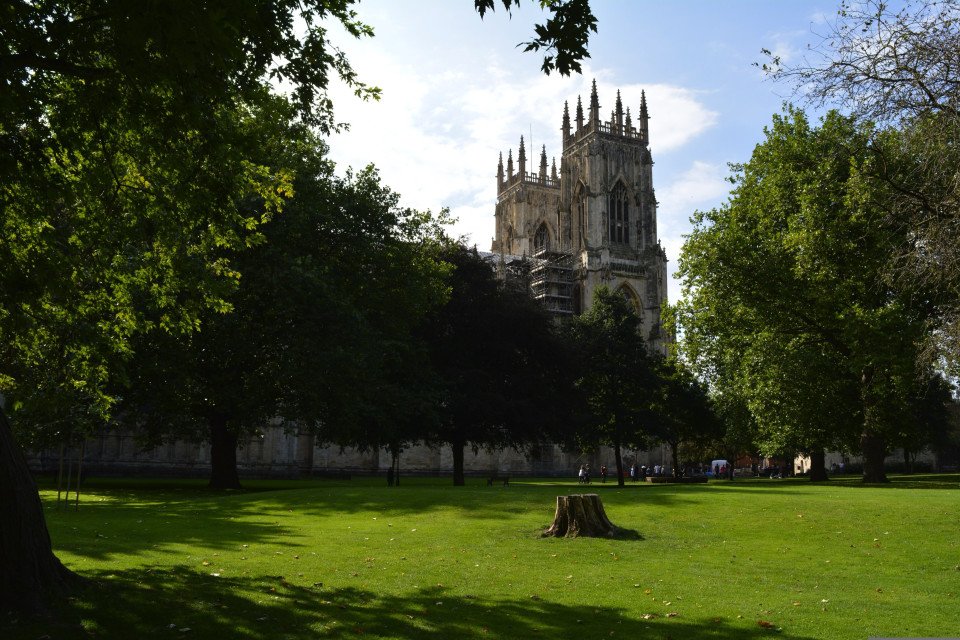
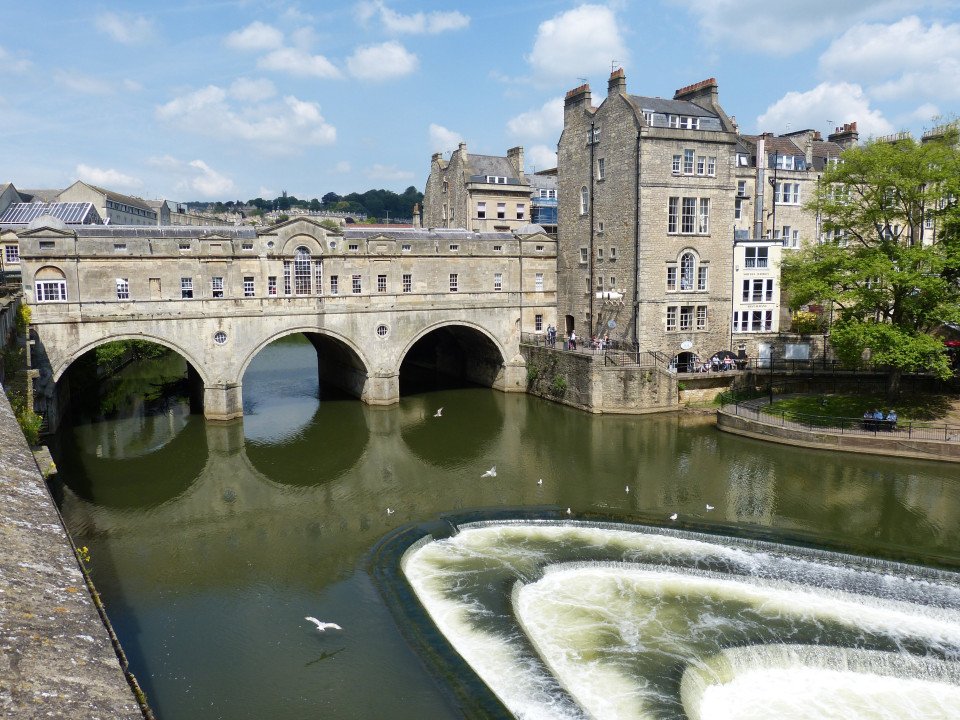

About 8 miles downstream—which means seaward, to the east—from central London, Greenwich is a small borough that looms large across the world. Once the seat of British naval power, it is not only home to the Old Royal Observatory, which measures time for our entire planet, but also the Greenwich Meridian, which divides the world into two—you can stand astride it with one foot in either hemisphere. Bear in mind that the journey to Greenwich is an event in itself. In a rush, you can take the driverless DLR train—but many opt for arriving by boat along the Thames. This way, you glide past famous sights on the London skyline (there’s a guaranteed spine chill on passing the Tower) and ever-changing docklands, and there’s usually a chirpy Cock-er-ney navigator enlivening the journey with his fun commentary. A visit to Greenwich feels like a trip to a rather elegant seaside town—albeit one with more than its fair share of historic sites. The grandiose Old Royal Naval Hospital, designed by Christopher Wren, was originally a home for veteran sailors. Today it’s a popular visitor attraction, with a more glamorous second life as one of the most widely used movie locations in Britain. Greenwich was originally home to one of England's finest Tudor palaces, and the birthplace of Henry VIII, Elizabeth I, and Mary I. Inigo Jones built what is considered the first "classical" building in England in 1616—the Queen's House, which now houses a collection of fine art. Britain was the world’s preeminent naval power for over 500 years, and the excellent National Maritime Museum> details that history in an engaging way. Its prize exhibits include the coat worn by Admiral Lord Nelson (1758–1805) in his final battle—bullet hole and all. The 19th-century tea clipper Cutty Sark was nearly destroyed by fire in 2007, but reopened in 2012 after a painstaking restoration. Now it’s more pristine than ever, complete with an impressive new visitor center. Greenwich Park, London's oldest royal park, is still home to fallow red deer, just as it has been since they were first introduced here for hunting by Henry VIII. The Ranger's House now houses a private art collection, next door to a beautifully manicured rose garden. Above it all is the Royal Observatory, where you can be in two hemispheres at once by standing along the Greenwich Meridian Line, before seeing a high-tech planetarium show. Toward north Greenwich, the hopelessly ambitious Millennium Dome has been successfully reborn as the O2 and now hosts major concerts and stand-up comedy gigs. More adventurous visitors can also go Up the O2 on a climbing expedition across the massive domed surface. Meanwhile, those who prefer excursions of a gentler kind may prefer to journey a couple of miles south of the borough, farther out into London’s southern suburbs, to the shamefully underappreciated Eltham Palace. Once a favorite of Henry VIII, parts of the mansion were transformed into an art deco masterpiece during the 1930s.



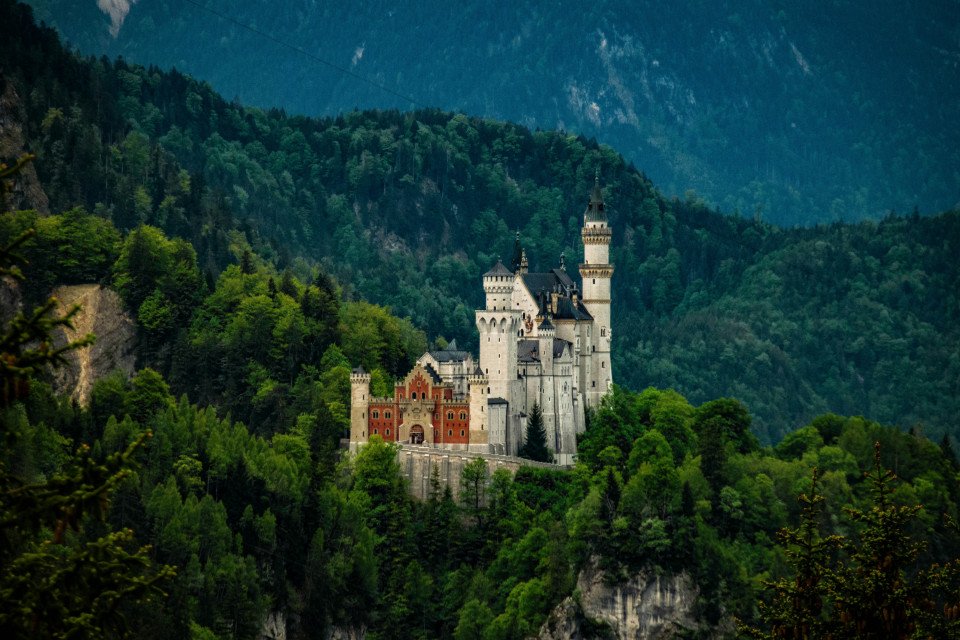


The city of Zurich, a global center for banking and finance, lies at the north end of Lake Zurich in northern Switzerland. The picturesque lanes of the central Altstadt (Old Town), on either side of the Limmat River, reflect its pre-medieval history. Waterfront promenades like the Limmatquai follow the river toward the 17th-century Rathaus

Verona is a city in northern Italy’s Veneto region, with a medieval old town built between the meandering Adige River. It’s famous for being the setting of Shakespeare’s "Romeo and Juliet." A 14th-century residence with a tiny balcony overlooking a courtyard is said be “Juliet’s House." The Verona Arena is a huge 1st-century Roman amphitheater, which currently hosts concerts and large-scale opera performances.

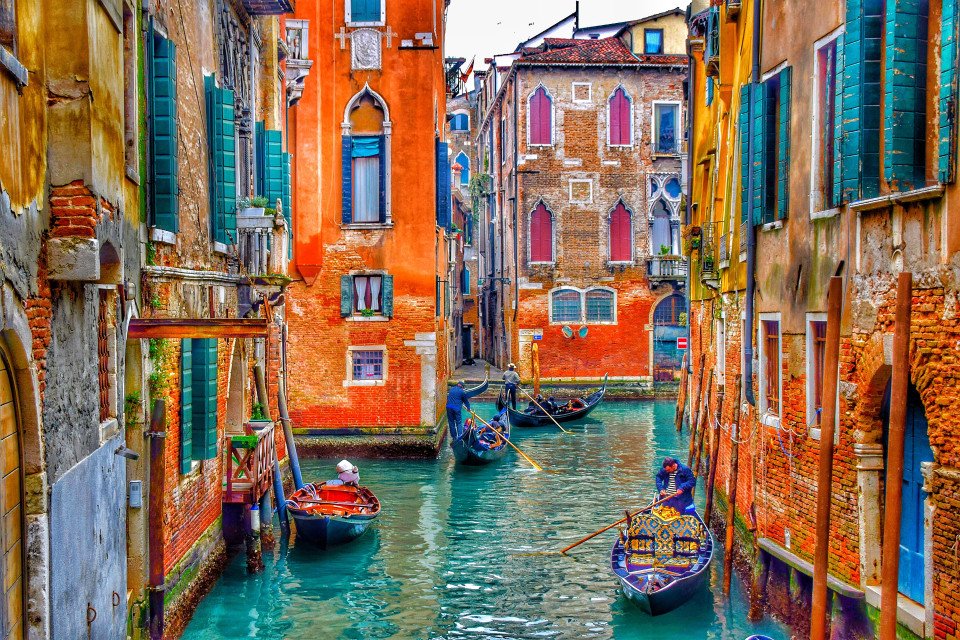
Venice is a city unlike any other. No matter how often you've seen it in photos and films, the real thing is more dreamlike than you could imagine. With canals where streets should be, water shimmers everywhere. The fabulous palaces and churches reflect centuries of history in what was a wealthy trading center between Europe and the Orient. Getting lost in the narrow alleyways is a quintessential part of exploring Venice, but at some point you'll almost surely end up in Piazza San Marco, where tourists and locals congregate for a coffee or an aperitif.

Spitz, Austria, is a charming village situated in the Wachau Valley along the Danube River. A popular destination in the heart of the Wachau region, Spitz lies encompassed by terraced vineyards producing world-renowned Austrian wines, offering an enticing blend of natural beauty and cultural enchantment.

Deggendorf is a city and district capital located in Bavaria in Southeast Germany. The city is situated on the banks of the river Danube which provides a natural border from the south. Deggendorf is populated with many hills, creating plenty of outdoor space to walk, cycle, horse-ride, and hike around or downhill and cross country skiing in the winter months. The wooded mountainous backdrop to this city has given Deggendorf its title as the Gateway to the Bavarian Forest and visitors can enjoy panoramic views of the countryside between the Danube and the Bavarian Forest. Head back down into the historical town centre and pass through the Spitaltor town gate where Deggendorf’s first iconic landmark can be seen: the Church of St Peter and St Paul. Further into the centre is the Old Town House, featuring its Gothic tower and original night watchman's apartments. As well as historical sites, Deggendorf offers traditional Bavarian hospitality and a lively atmosphere in its bars and restaurants, together with the city square and broad market streets for modern and traditional shopping.



Experience Belgium's capital, a city renowned for its cultural influence and significance in European politics. Brussels (Bruxelles) hosts iconic landmarks such as the Grand Place, Atomium and the Manneken Pis, and seamlessly blends historic allure with contemporary character. Between marvelling at the sites, enjoy world-famous gastronomy, chocolate and Belgian waffles, and find yourself immersed in the essence of Belgian tradition and innovation.

Located in the West of the country, Koblenz is one of the oldest cities in Germany. It is situated on both banks of the river Rhine, at its confluence with the Moselle River. The beginnings of Koblenz can be traced back to its military beginnings around 8 BC. The city is rich in its history and heritage and is easily explored on foot. Take the cable car crossing over the river Rhine for spectacular aerial views or enjoy the city from the one thousand year old fortress, Ehrenbreitstein. The upper middle Rhine Valley is a UNESCO World Heritage Site and its unique landscape can be enjoyed and discovered through the interactive multimedia journey at the Romanticum. Historical and architectural sites of interest include Stolzenfels Castle, the Electoral Palace of Koblenz and Old Town. From the romantic winding streets and small squares of Old Town, stroll through the alleyways from the Church of the Holy Virgin to the St Kastor Basilica and enjoy the picturesque buildings and squares along the way. Koblenz is also very popular for its Riesling and strong Spatburgunder wines since the Romans introduced it two thousand years ago.

Salzburg, tucked away in the heart of Austria, is a city with music and harmony woven deeply into the tapestry of its culture, as it was once the birthplace of the legendary Wolfgang Amadeus Mozart. Paying tribute to its orchestral legacy, Salzburg now hosts the annual Mozart Festival, attracting a global audience of classical music enthusiasts. What's more, the city's historic old town is a UNESCO World Heritage Site, and features historic landmarks such as Hohensalzburg Fortress and the iconic Mirabell Palace and Gardens, offering visitors a journey through centuries of history.

Sitting on the banks of the Danube River, Emmersdorf is an enchanting village recognised for its striking architecture, particularly its parish church. Framed by rolling hills, Emmersdorf is home to a number of breath-taking parks, gardens and vineyards, immersing visitors into the scenic surroundings and cultural richness that defines the village.

France's iconic and enchanting capital, Paris, is a globally recognised symbol of art, culture and romance, sitting along the banks of the river Seine. Home to world-famous landmarks including the Eiffel Tower, Louvre Museum and the Notre-Dame Cathedral, Paris is a beacon of timeless elegance, cultural richness and historical magnitude. Affectionately named the City of Light and the City of Love, Paris enchants with its stunning boulevards, charming cafes and world-class culinary scene, with the Seine gracefully winding through the city and further enhancing the romantic allure. The artistic haven of Monmartre contributes to the city's heritage and status as a global symbol of fashion, art and culinary excellence, serving as an epitome of sophistication in a destination that seamlessly intertwines history and modernity.


The third largest city in Germany, and one of the most prosperous and fastest growing, Munich is a city characterised by its lively energy blended seamlessly with its tranquil atmosphere. For tourists looking to explore the city and discover its rich history, or for those interested in the finest beers, stunning views or mind-blowing cuisine, Munich is host to an incredible variety of beer gardens, museums, parks, lakes, historical sites, retailers and restaurants, meaning that there really is something for everyone in Munich.
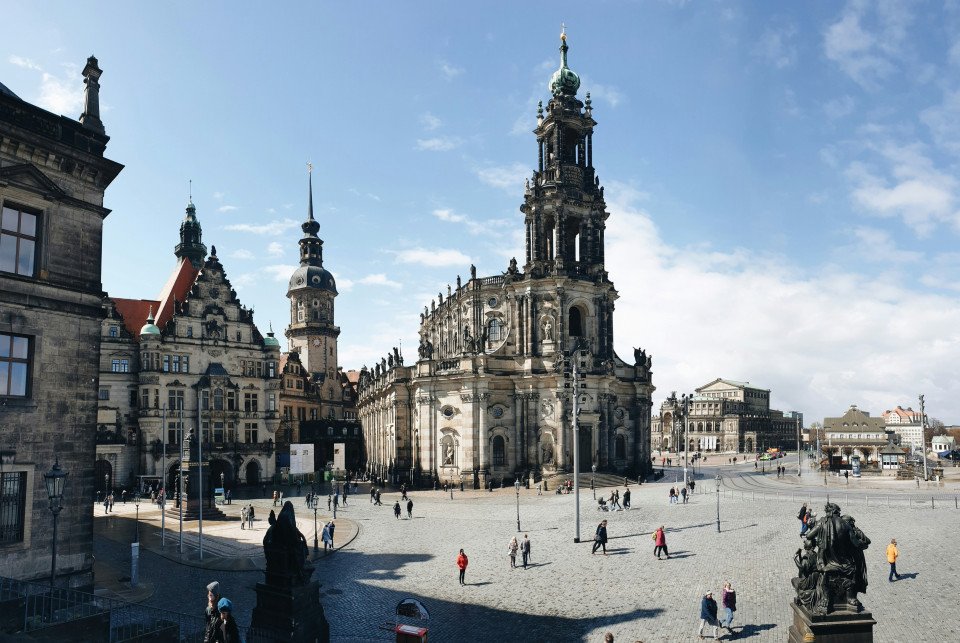
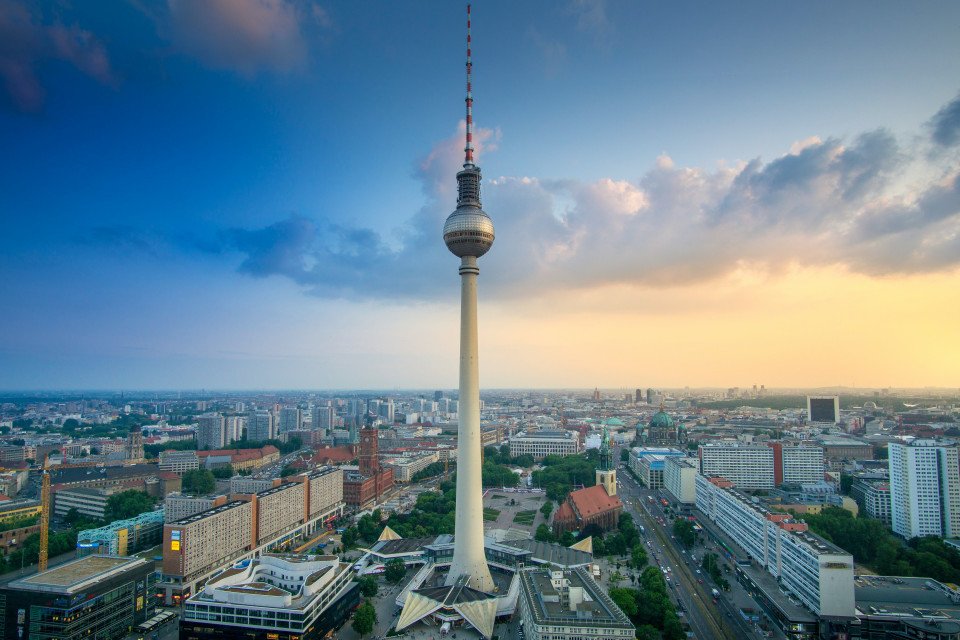
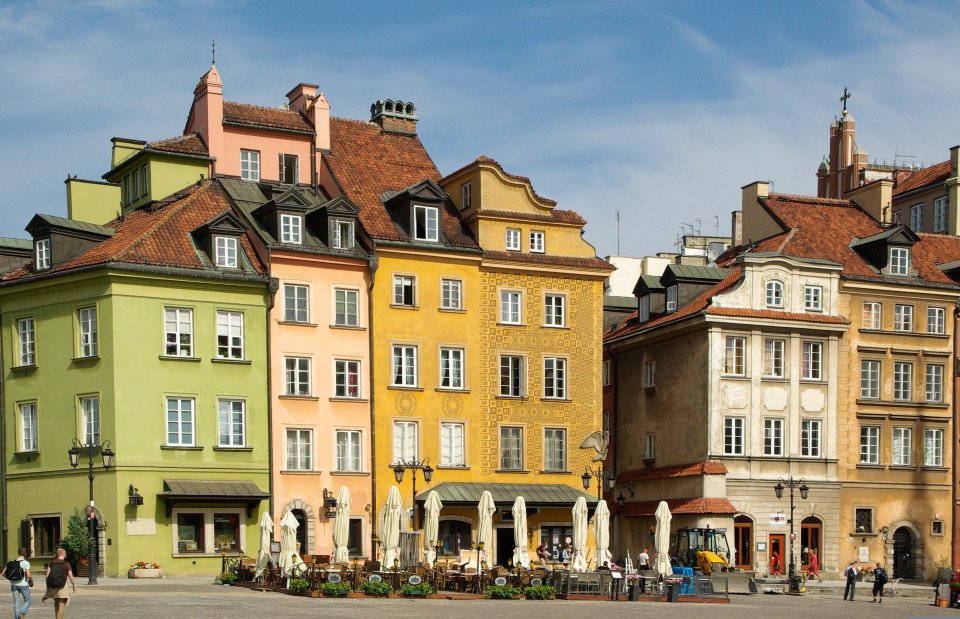
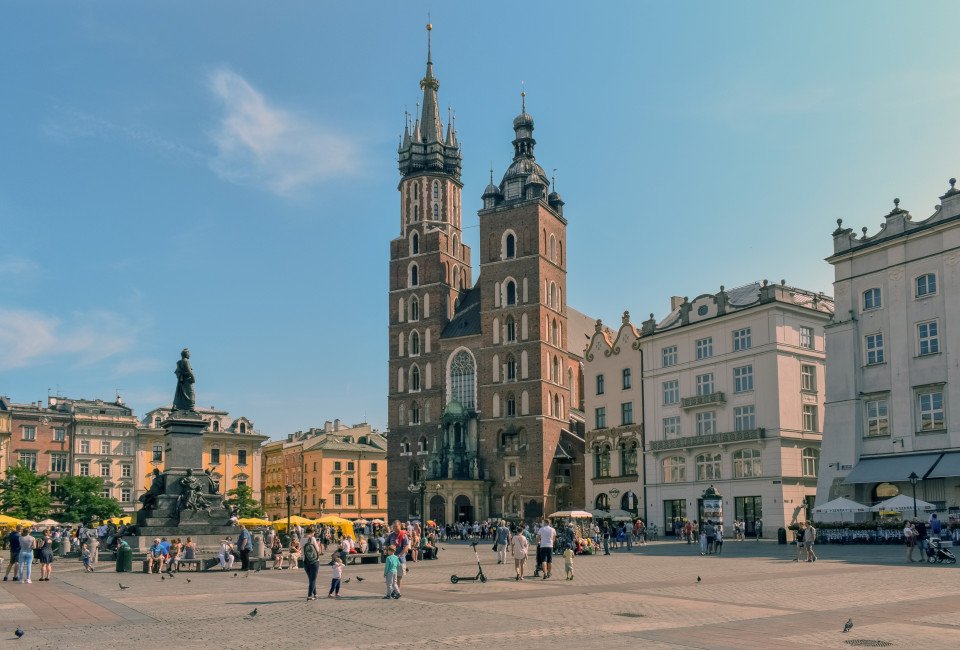



Nikopol, Bulgaria, has played a significant role in history thanks to its strategic location along the southern bank of the Danube, witnessing various civilisations and proving a crucial feature in many epochs, evidenced by its many archaeological marvels. A magnificent fortress sits atop a hill overlooking the Danube, showcasing Nikopol's military prowess and enduring legacy.



Arbanasi, a small village in the north-central part of Bulgaria, is a picturesque only village recognised for its preserved 19th century architecture and old churches. For tourists seeking a glimpse into Bulgaria's past, Arbanasi is a popular destination with a rich history, surrounded by picturesque landscapes that provide a stunning backdrop for hiking, cycling and nature walking.
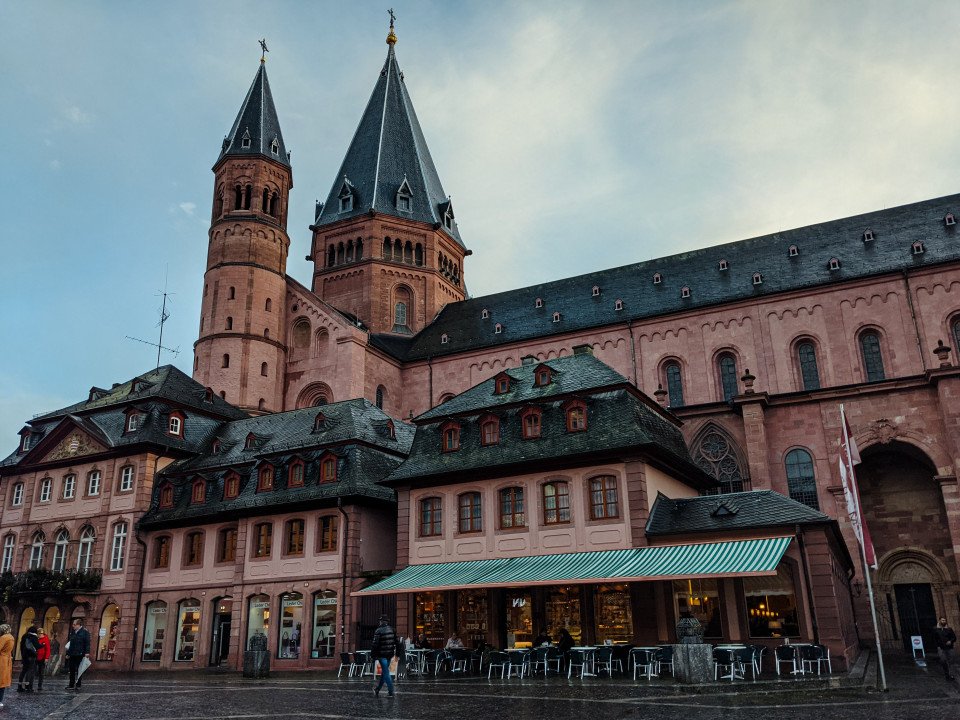
Situated on the banks of the Rhine, Mainz is a German city with an intricate history dating back to the Roman era, as the capital of the Rhineland-Palatine state. Celebrating its cultural heritage, Mainz is home to several iconic landmarks that represent the city's historical significance, including the Mainz Cathedral, the Old Town and the Gutenberg Museum, which honours the inventor of the printing press.


Lucerne, a compact city in Switzerland known for its preserved medieval architecture, sits amid snowcapped mountains on Lake Lucerne. Its colorful Altstadt (Old Town) is bordered on the north by 870m Museggmauer (Musegg Wall), a 14-century rampart. The covered Kapellbrücke (Chapel Bridge), built in 1333, links the Aldstadt to the Reuss River's right bank.





A charming town known for its winemaking traditions, Kitzingen is located in Bavaria alongside the Main River, home to historic landmarks including the Old Main Bridge and the Kitzingen Fortress, reflecting its medieval past. With festivals and events celebrating its wine culture, Kitzingen's vibrant atmosphere make it a must-visit destination for history enthusiasts, as well as those seeking a taste of regional Bavarian hospitality.

Situated in the Franconia wine region of Bavaria, Germany, Volkach is celebrated for its impressive vineyards and wine culture. Delightfully blending historic buildings, such as the Pilgrimage Church of Maria im Weingarten, with scenic landscapes adorned with vineyards, Volkach invited wine enthusiasts to explore its idyllic surroundings and savour the local wines.

Rudesheim am Rhine is a town in the Rhine Valley in Germany and part of the UNESCO World Heritage Site of Rhine Gorge. It is known for its production of Riesling wine and has been popular for its wine making since ancient times. The Medieval Bromserburg Castle is home to the Rheingau Wine Museum and wine is a crucial part of Rudesheimer culture. The town is surrounded with vineyards and wineries, as well as many local wine bars and seasonal wine taverns. Wine tasting is a must do in Rudesheim and dining out is a great accompaniment. The local cuisine is seasonal and is closely intertwined with the wine growing traditions together with soups such as Zwiebelkuchen, Handkäs mit Musik and Spundekäs. Nordic Walking is popular around town, with five adventure trails around the vicinity, as well as many popular cycling routes. Great views of the town can be found from the water, the cable car to Niederwald Monument and the Monument itself. Old Town has the best examples of the town’s architecture with Eagle Tower, Oberstrasse and Rheinstein Castle some key sites to visit.





Hârșova, Romania, is a town steeped in history with a strategic location alongside the Danube, making it a significant crossroads throughout the ages with remnants of ancient civilians adorning the landscape. Hârșova's cultural heritage is eloquently showcased through iconic landmarks, notably the stunning bridge that spans the Danube and the Ethnographic Museum, which serves as a powerful representation of the town's significance in history, as well as offering visitors a window into its vibrant past.

Fetești is located in the Ialomița County, Romania, and is a lively town bursting with modern vitality and historical depth. Resting along the banks of the Danube, Fetești acts as a crucial transportation hub that connects various regions of Romania, fostering a rich cultural exchange over the centuries. This blend of influences is evident in the diverse culinary traditions, architecture and bustling markets adorned with local produce.

Utrecht is a city in the Netherlands, known for its medieval center. It has tree-lined canals, Christian monuments and a venerable university. The iconic Domtoren, a 14th-century bell tower with city views, stands opposite the Gothic Cathedral of St. Martin on central Domplein square. The Museum Catharijneconvent shows religious art and artifacts in a former monastery.
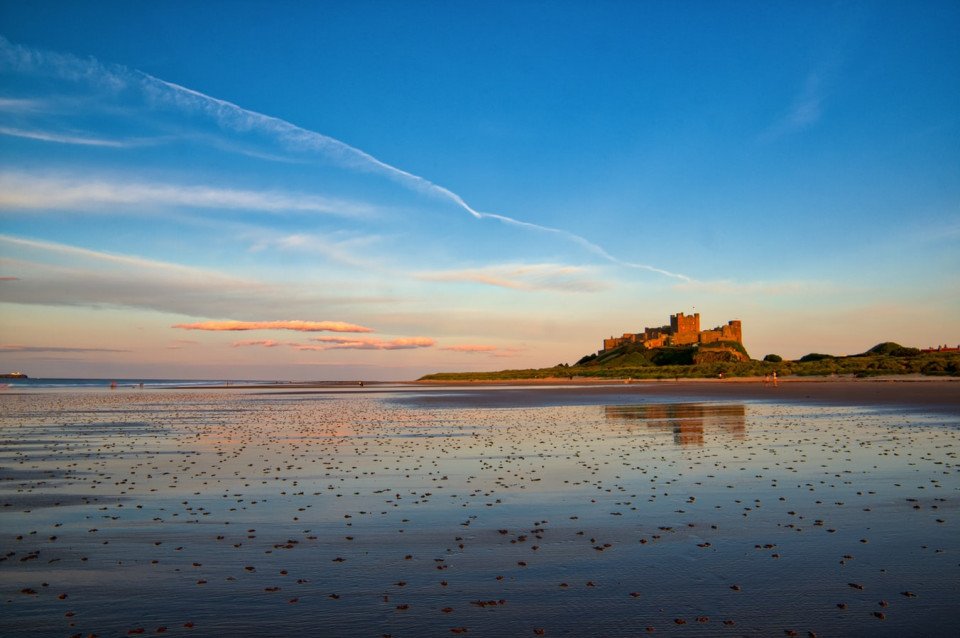
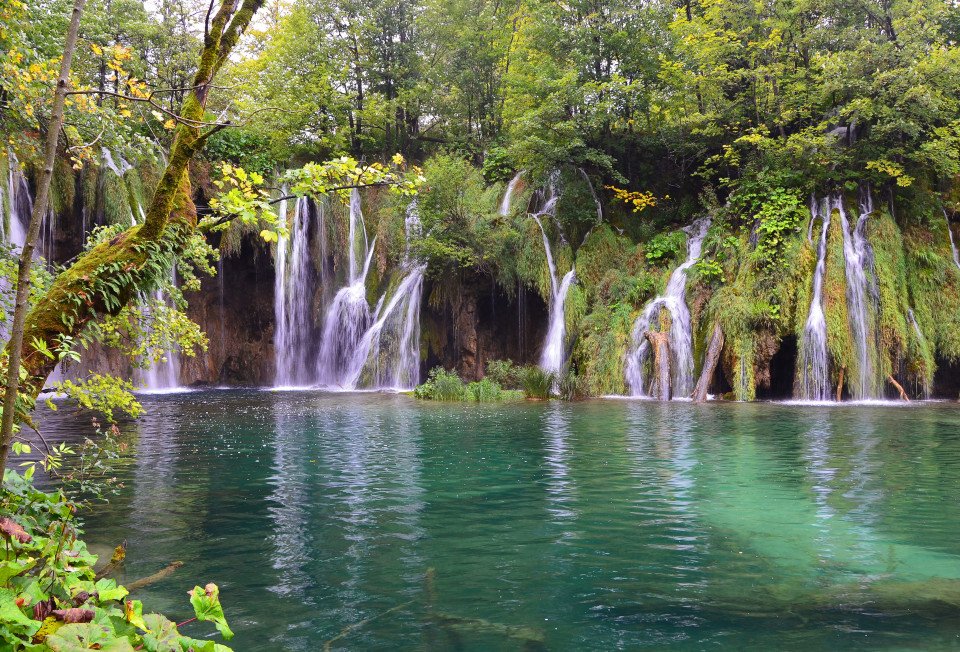


Brugge (Bruges) is a city pulled straight from a fairy-tale, famed for its medieval architecture sitting alongside romantic canals, not to mention the iconic Markt square featuring the historic Belfry. Visitors to Brugge are enchanted by cobblestone streets, traditional chocolate shops, the serene Minnewater lake and a timeless ambiance of the city, transporting them to a bygone era.



Explore Antwerp, Belgium's second city. Known for its diamond cutting industry, fashion and the many great artists that lived in its vicinity, Antwerp is a city focused on art and culture.


Hoorn was once a vital centre for trade and shipping during the Dutch Golden Age, thanks to its location on the shores of the IJsselmeer. A picturesque town with a rich maritime history, Hoorn's beautifully well-preserved architecture, including the imposing Hoofdtoren (Main Tower), reflect the town's cultural tapestry and the prosperity of the era. Visitors are invited to meander the cobblestone streets, take in the scenic harbour and take a trip to the Westfries Museum, immersing themselves in Hoorn's maritime history and old-world character.

Neuhofen an der Ybbs is a must-visit for adventurers and nature lovers, nestled in the foothills of the Alps. The perfect destination to hike, ski and explore natural wonders, Austria's countryside enchants with its historic architecture, quaint streets and traditional Alpine charm. The Ybbs River meanders gracefully through the town, offering an idyllic retreat for relaxation and outdoor activities.
